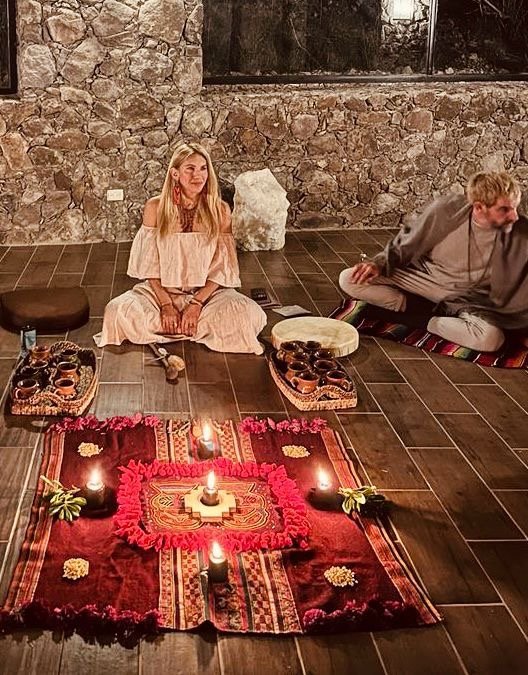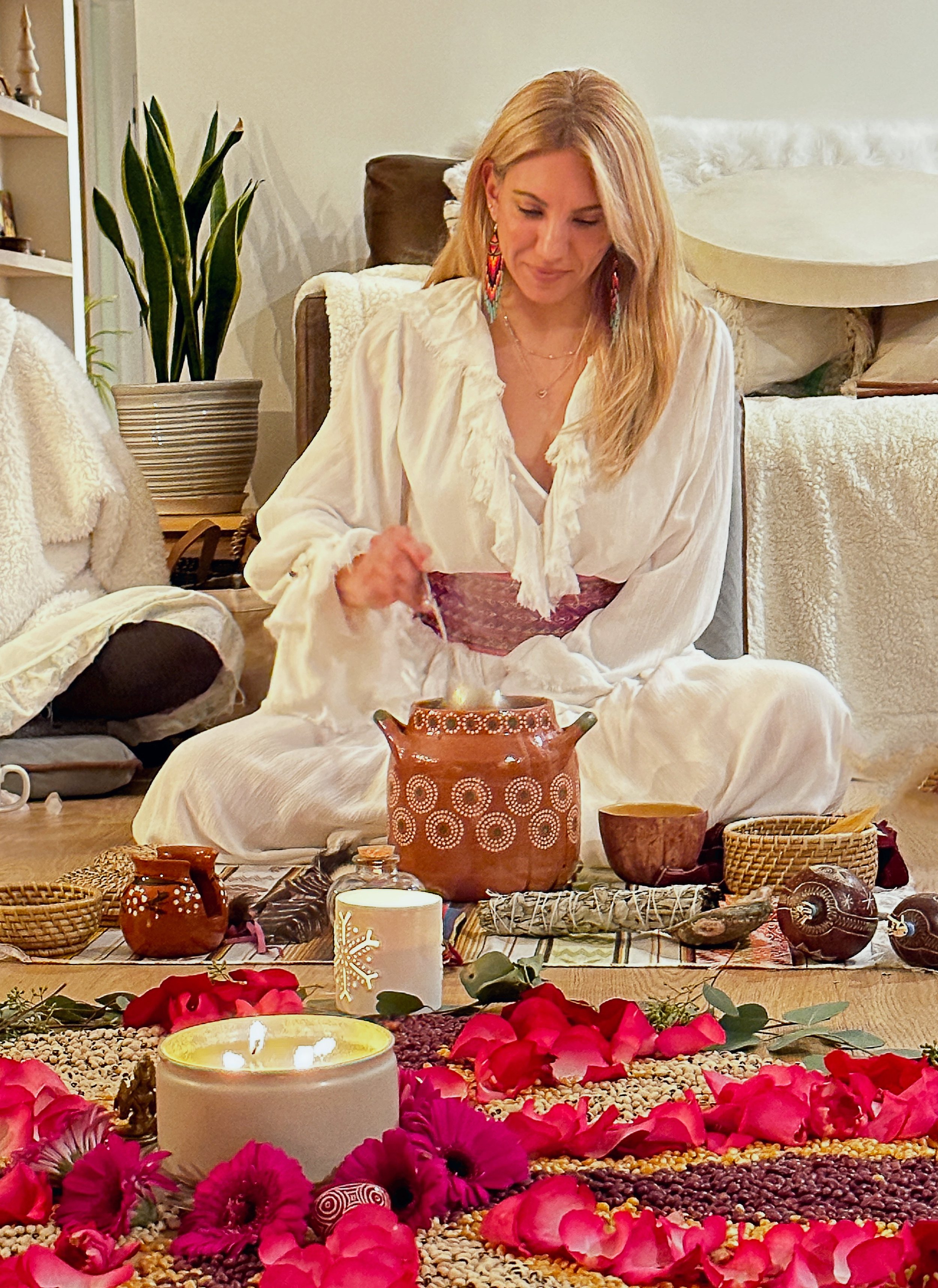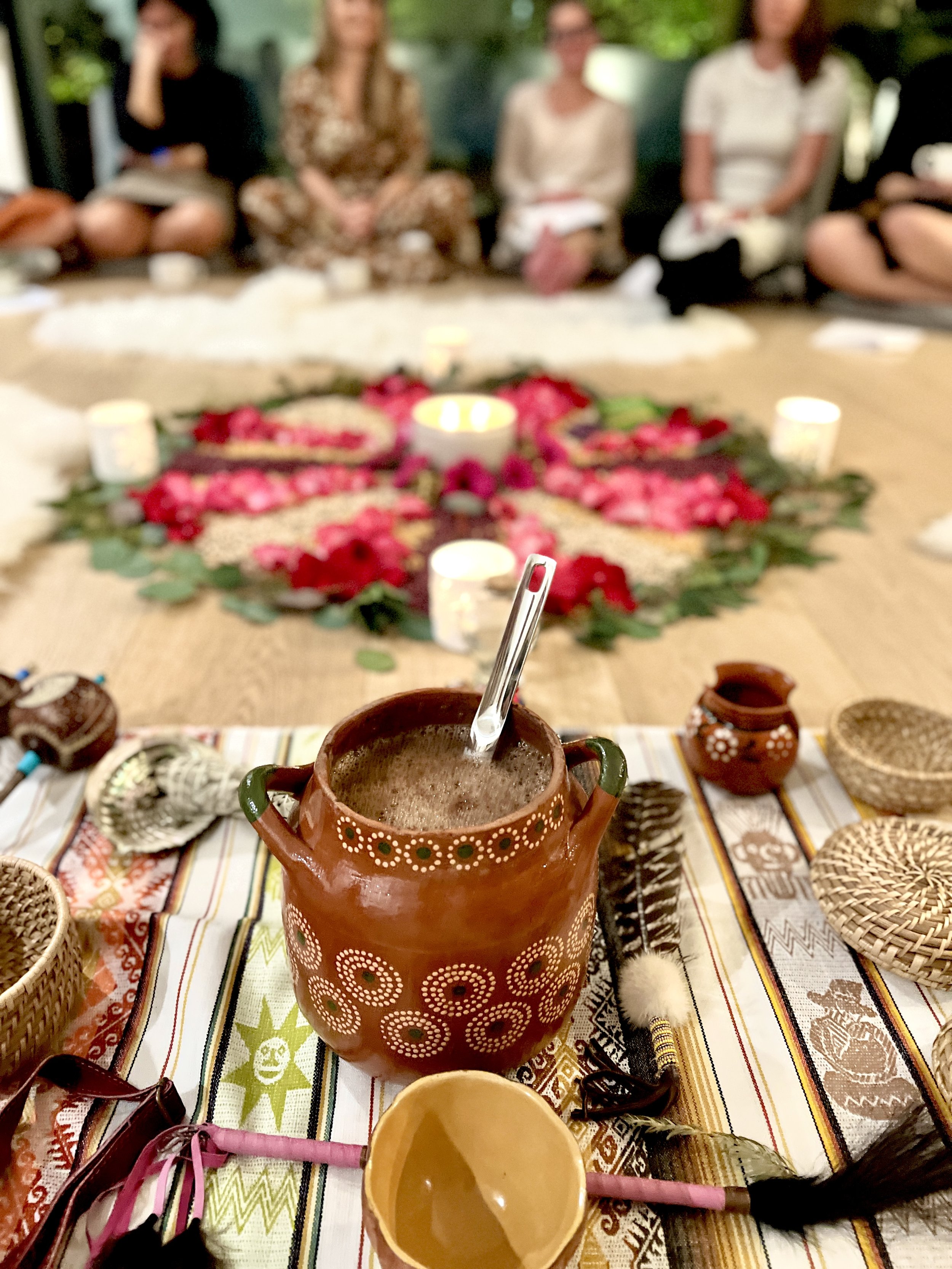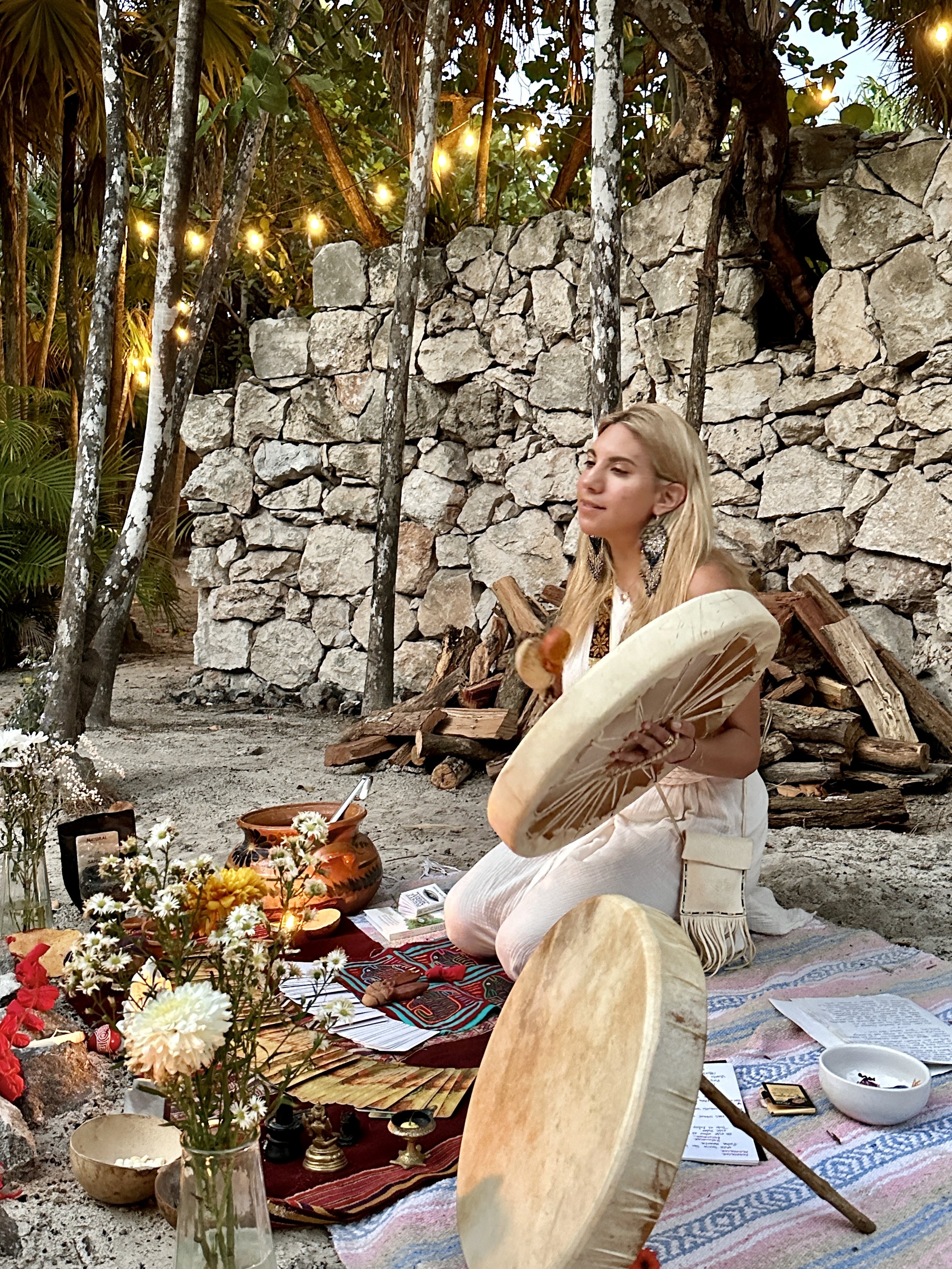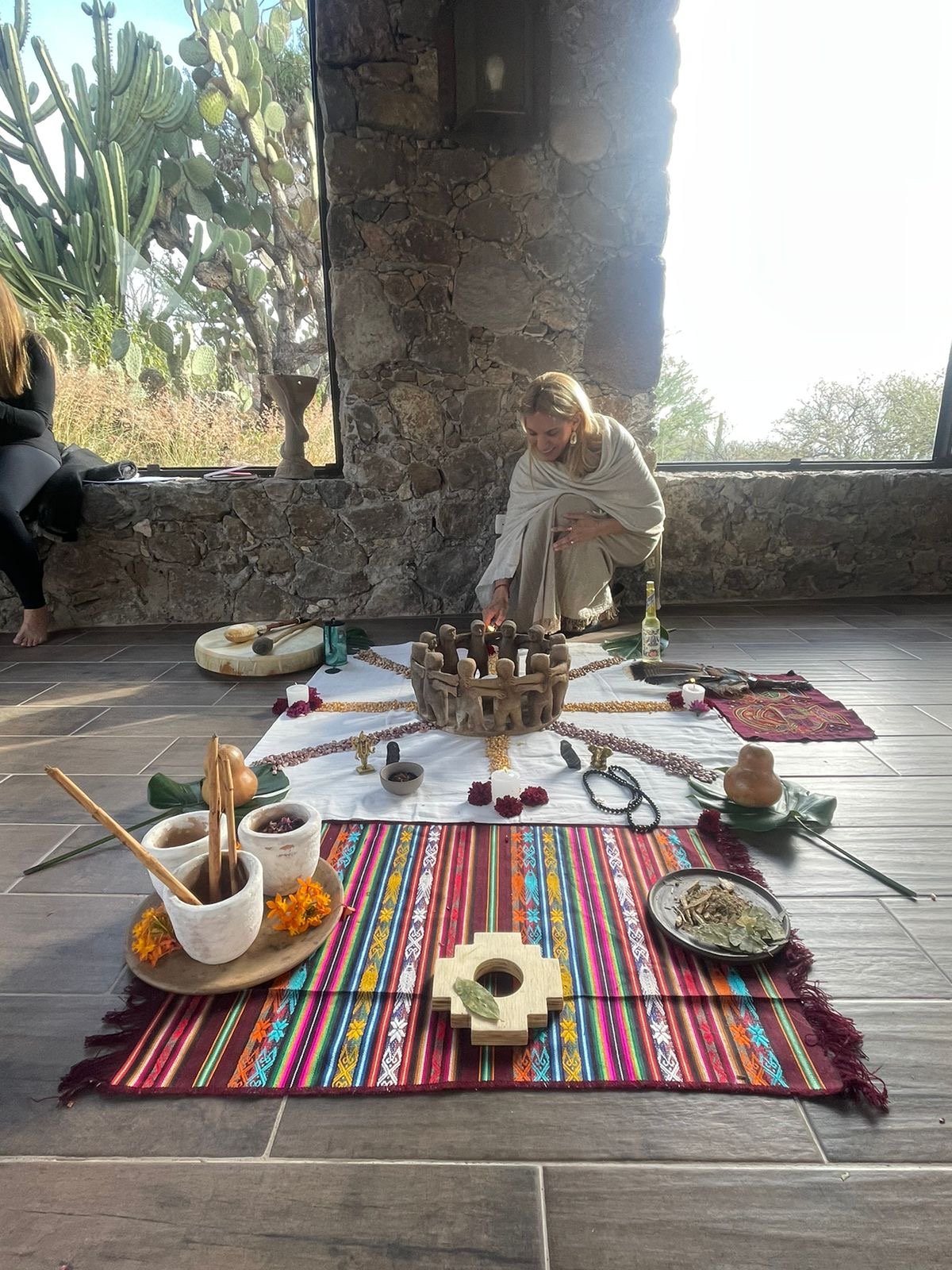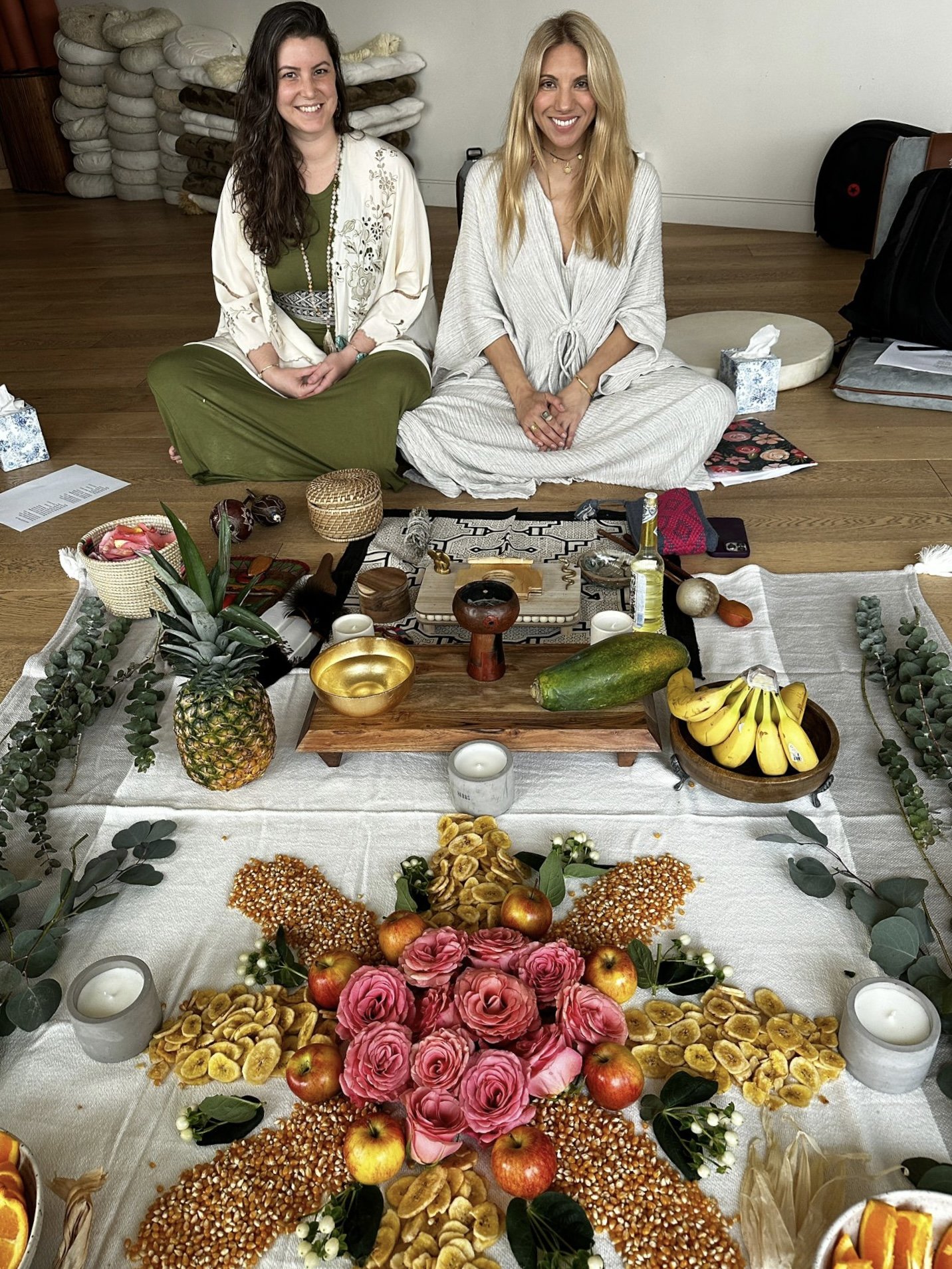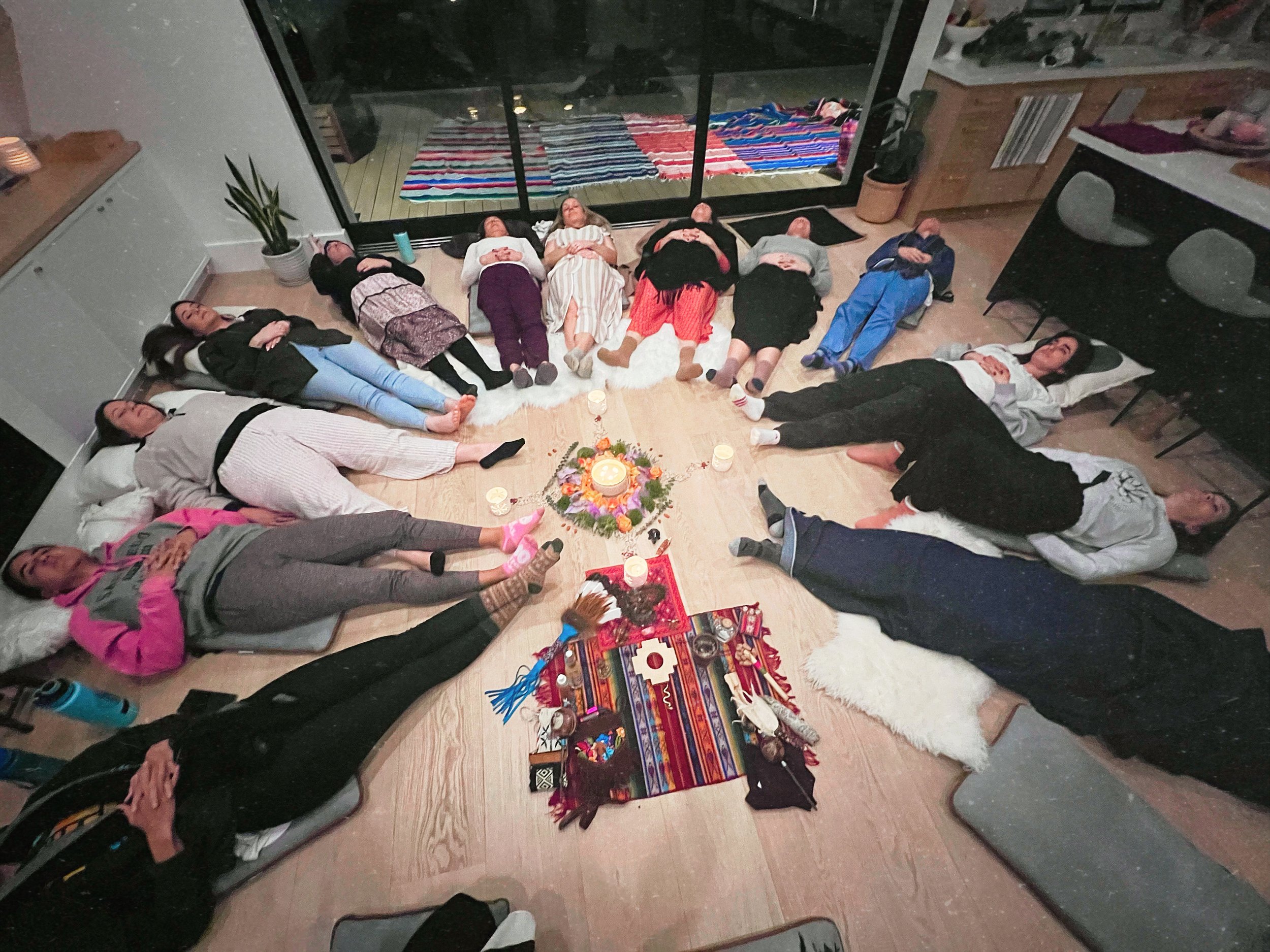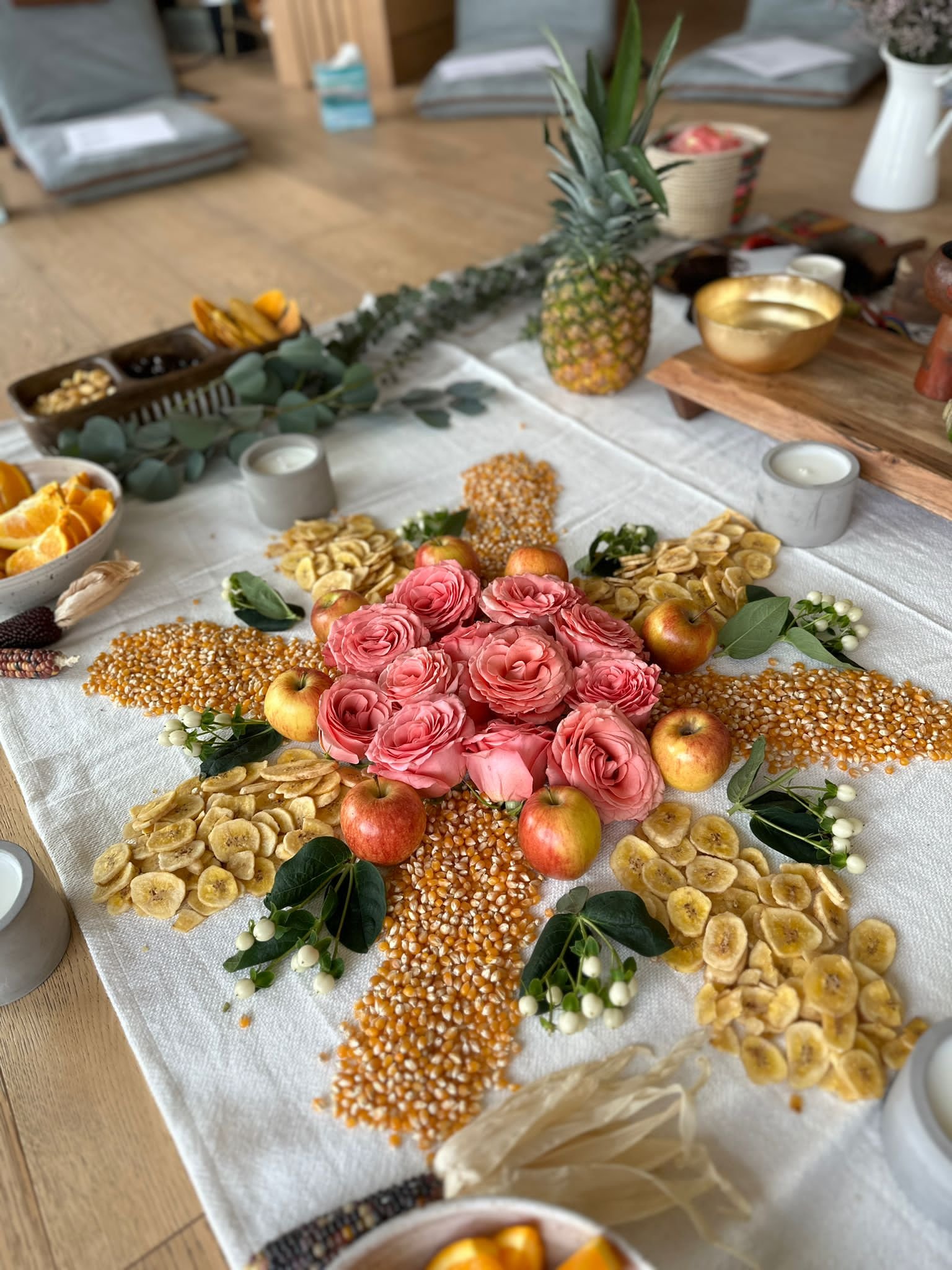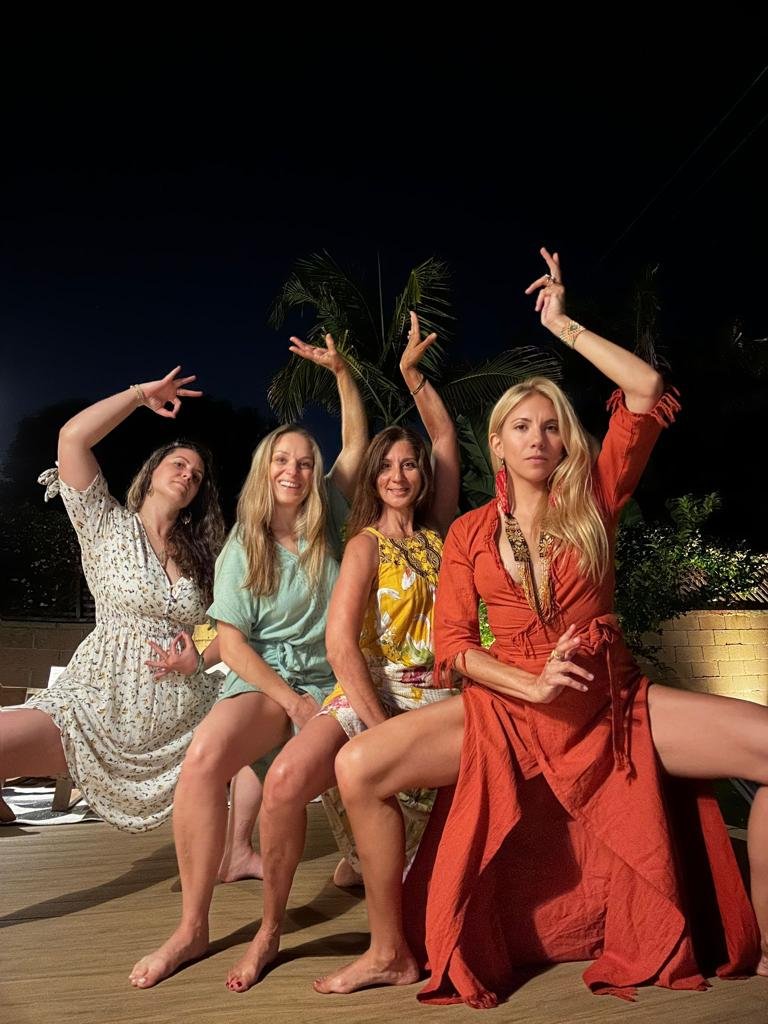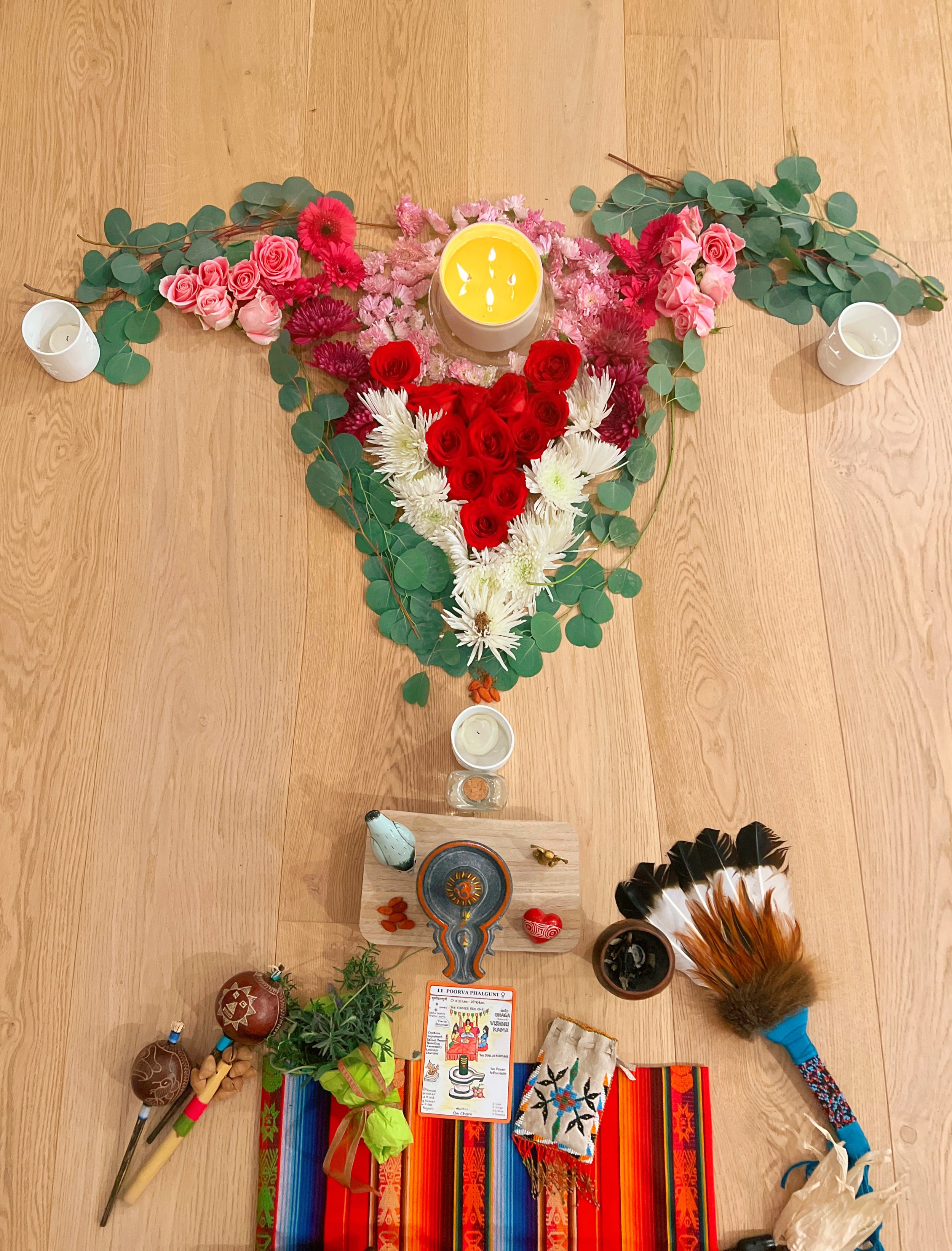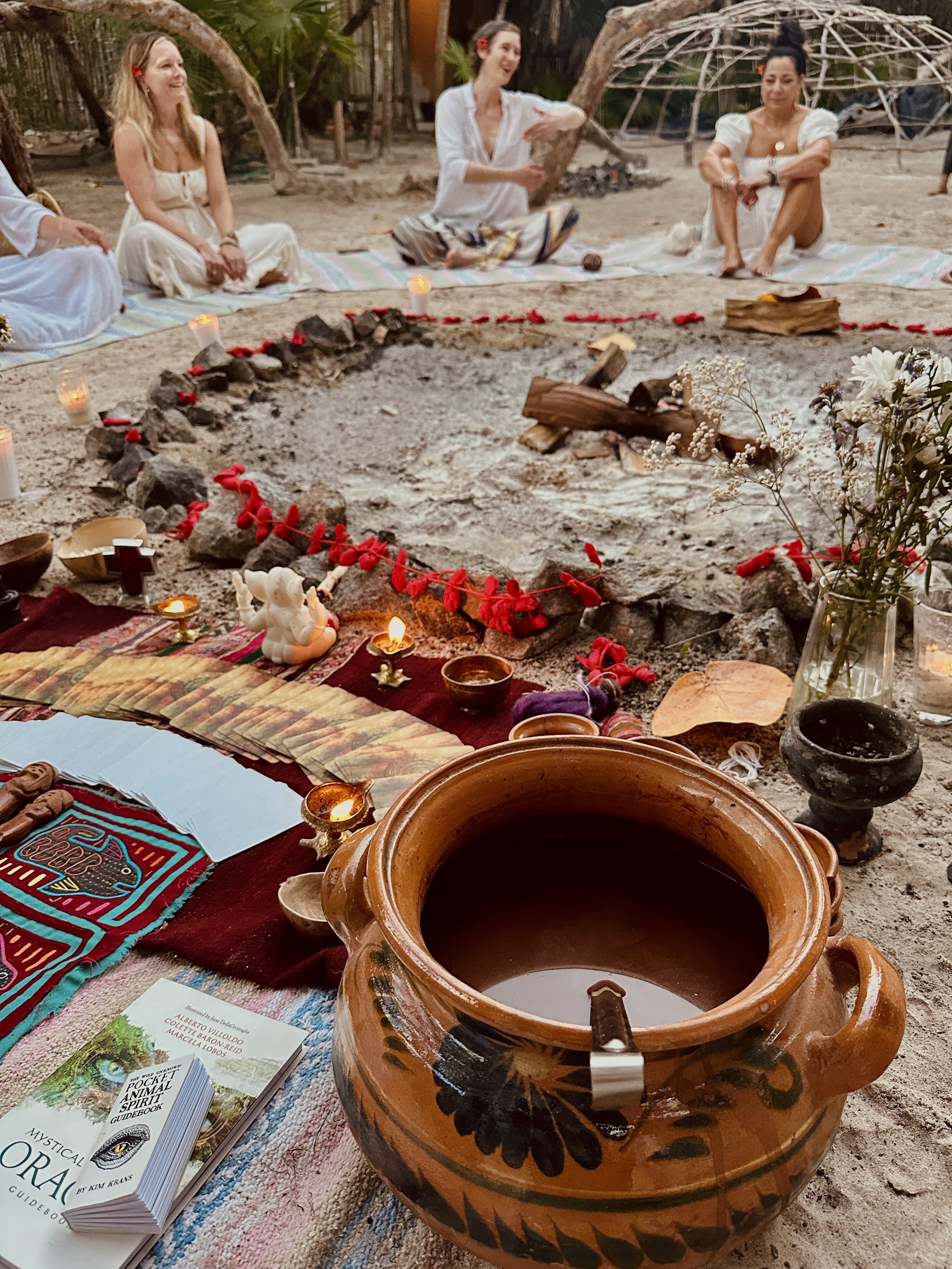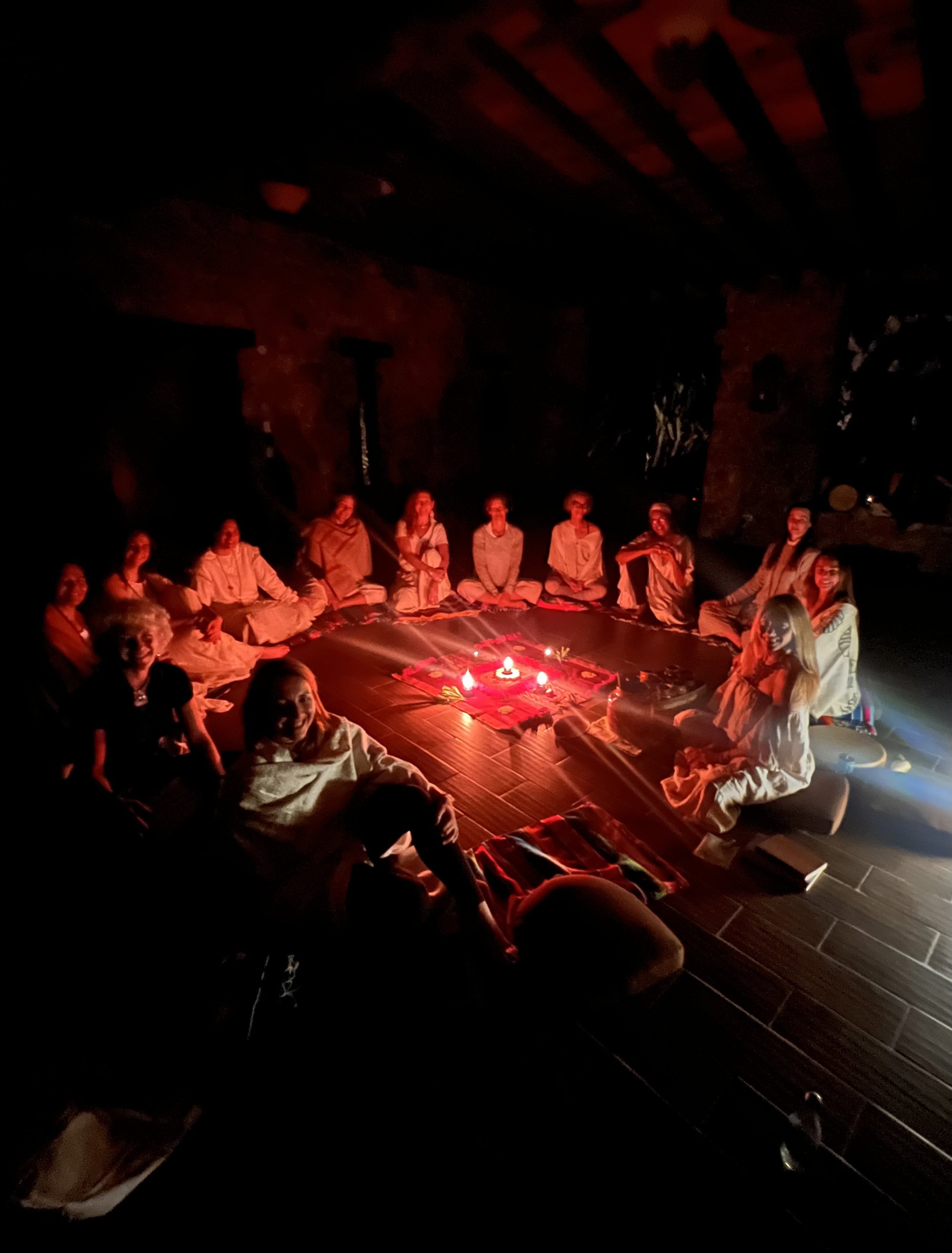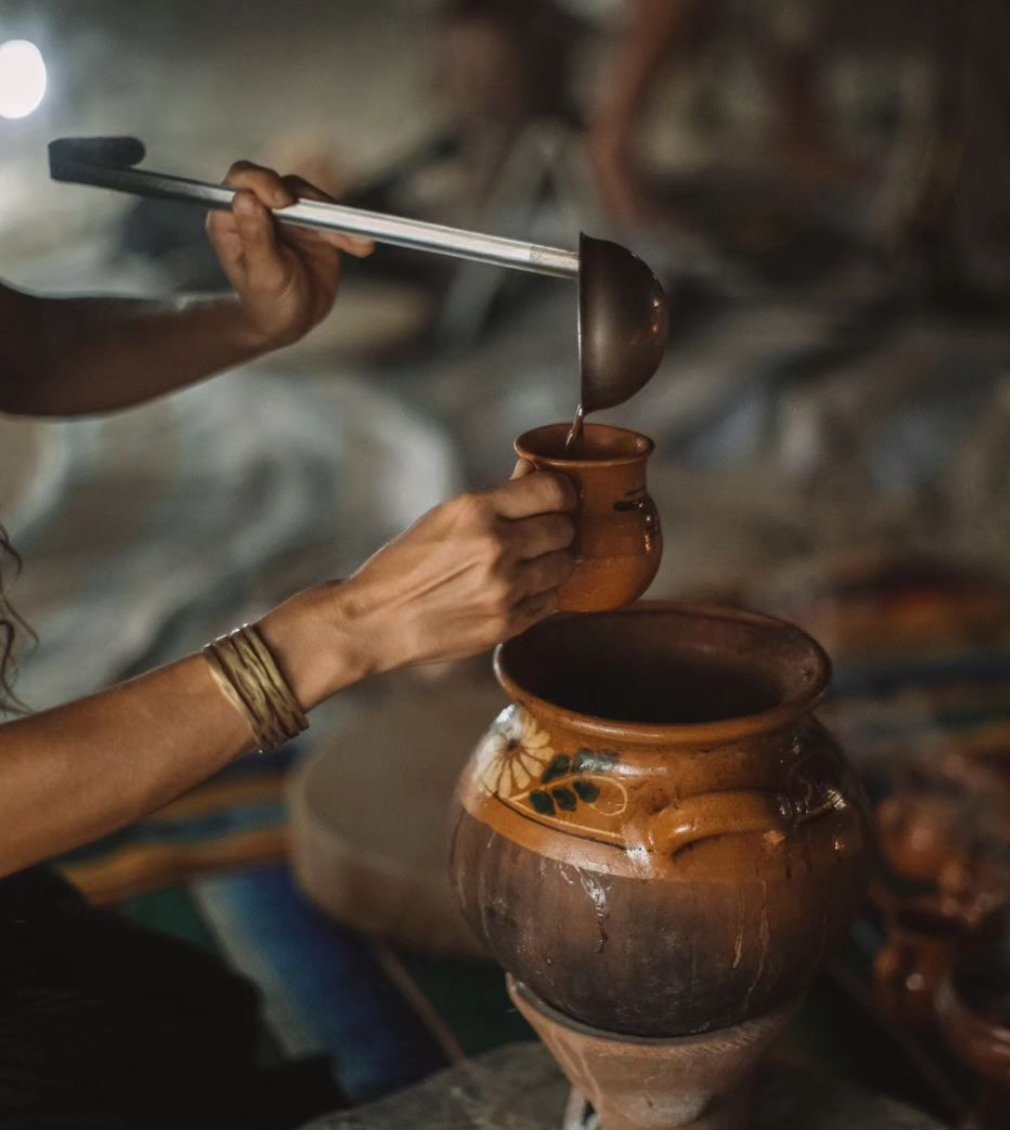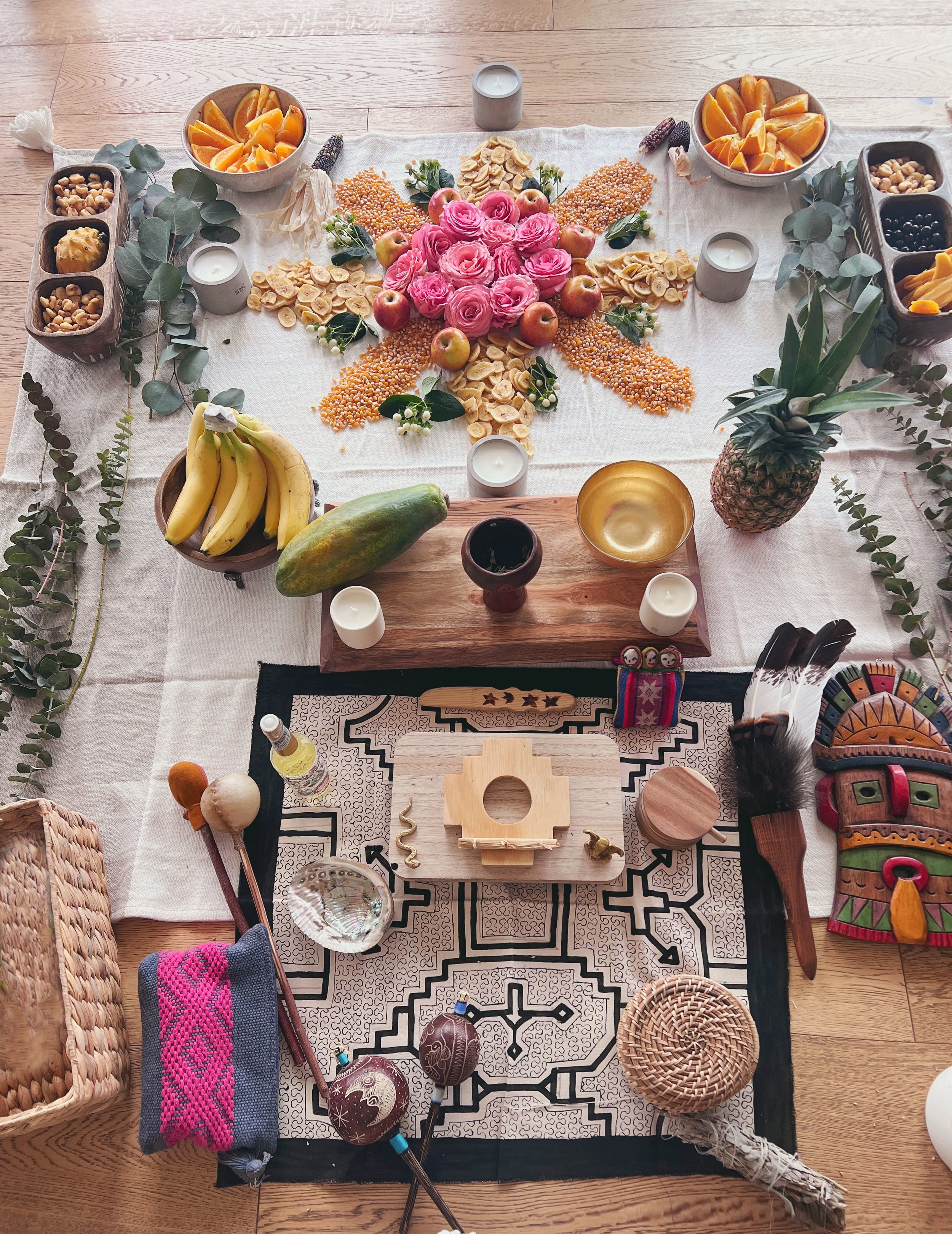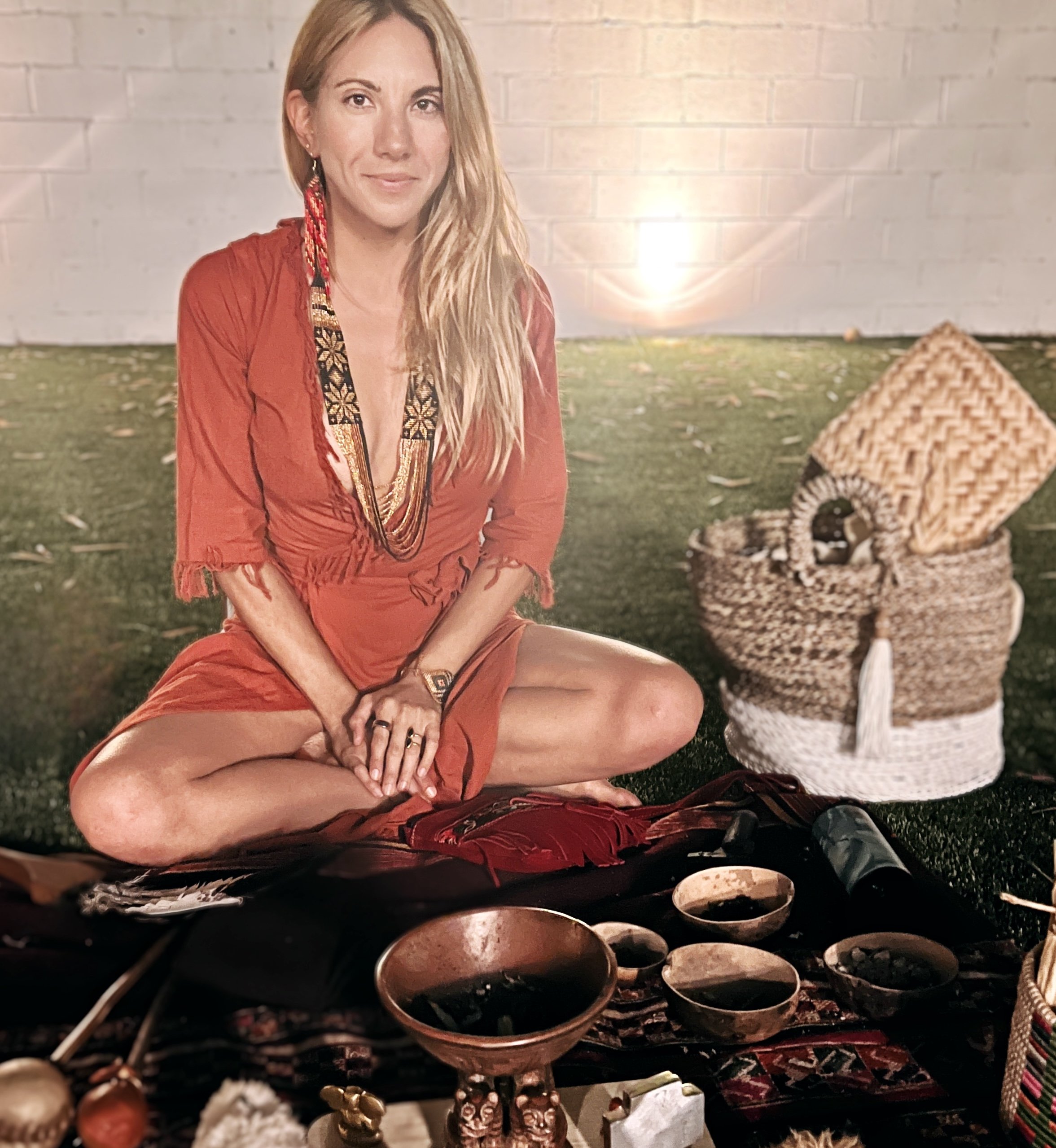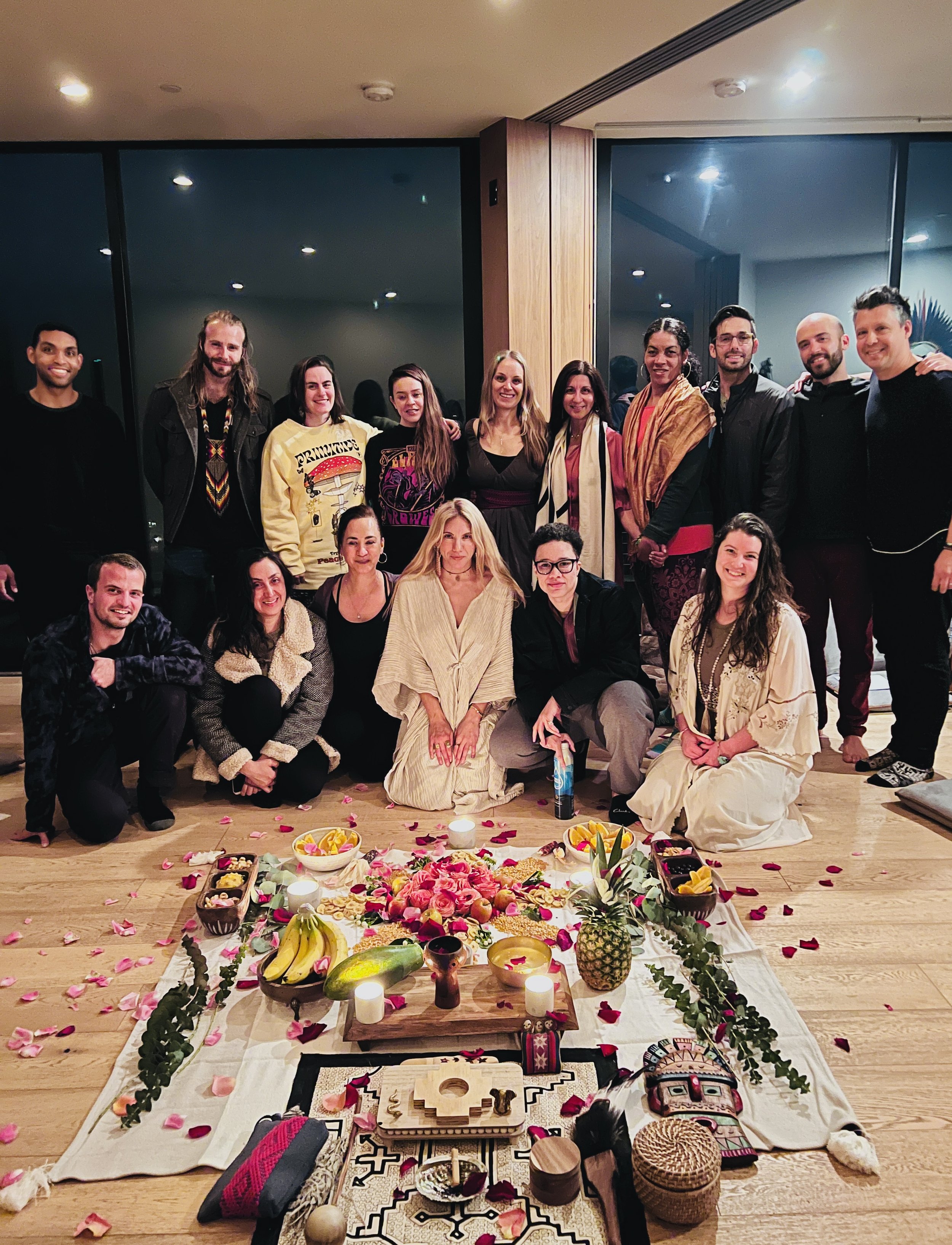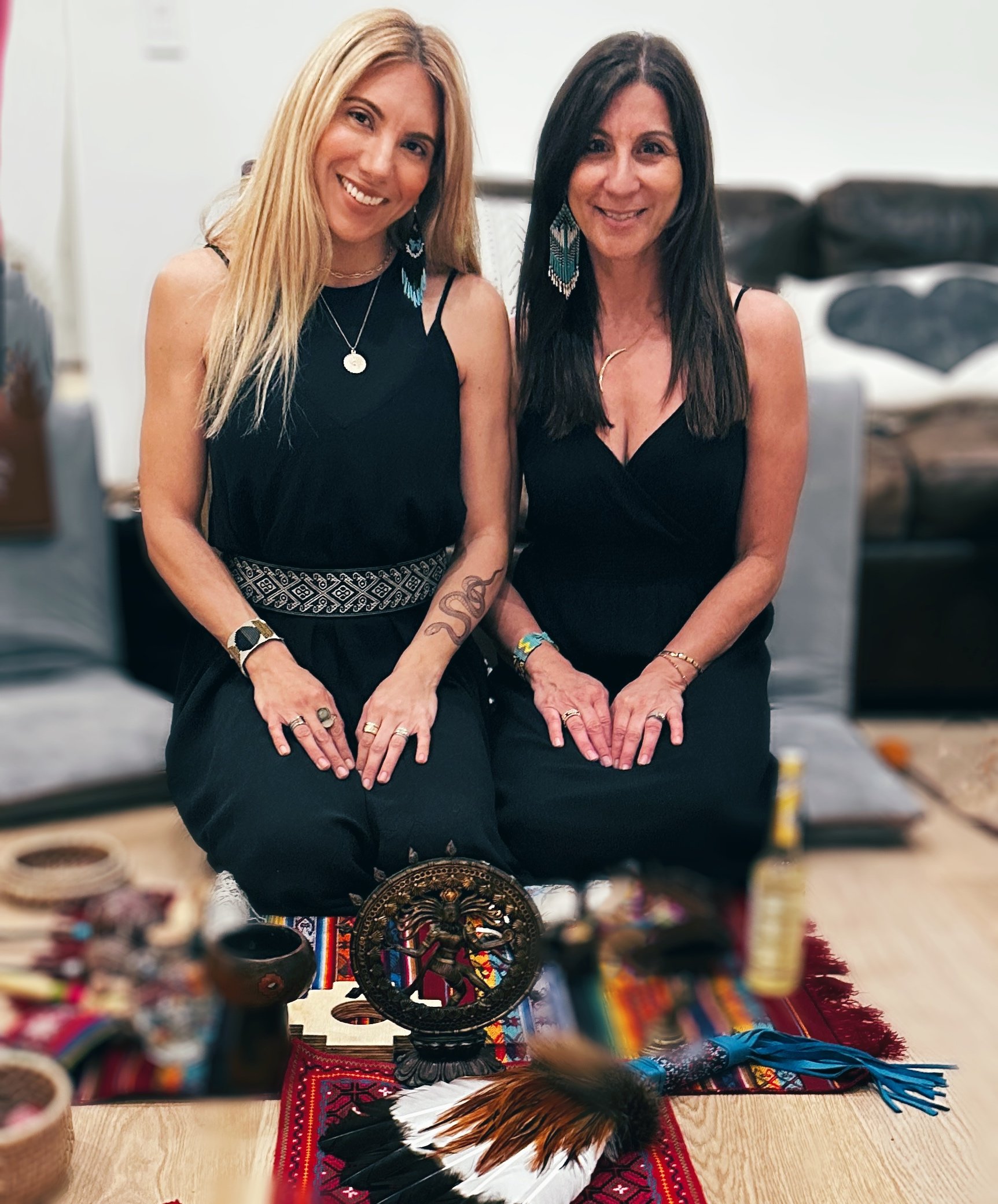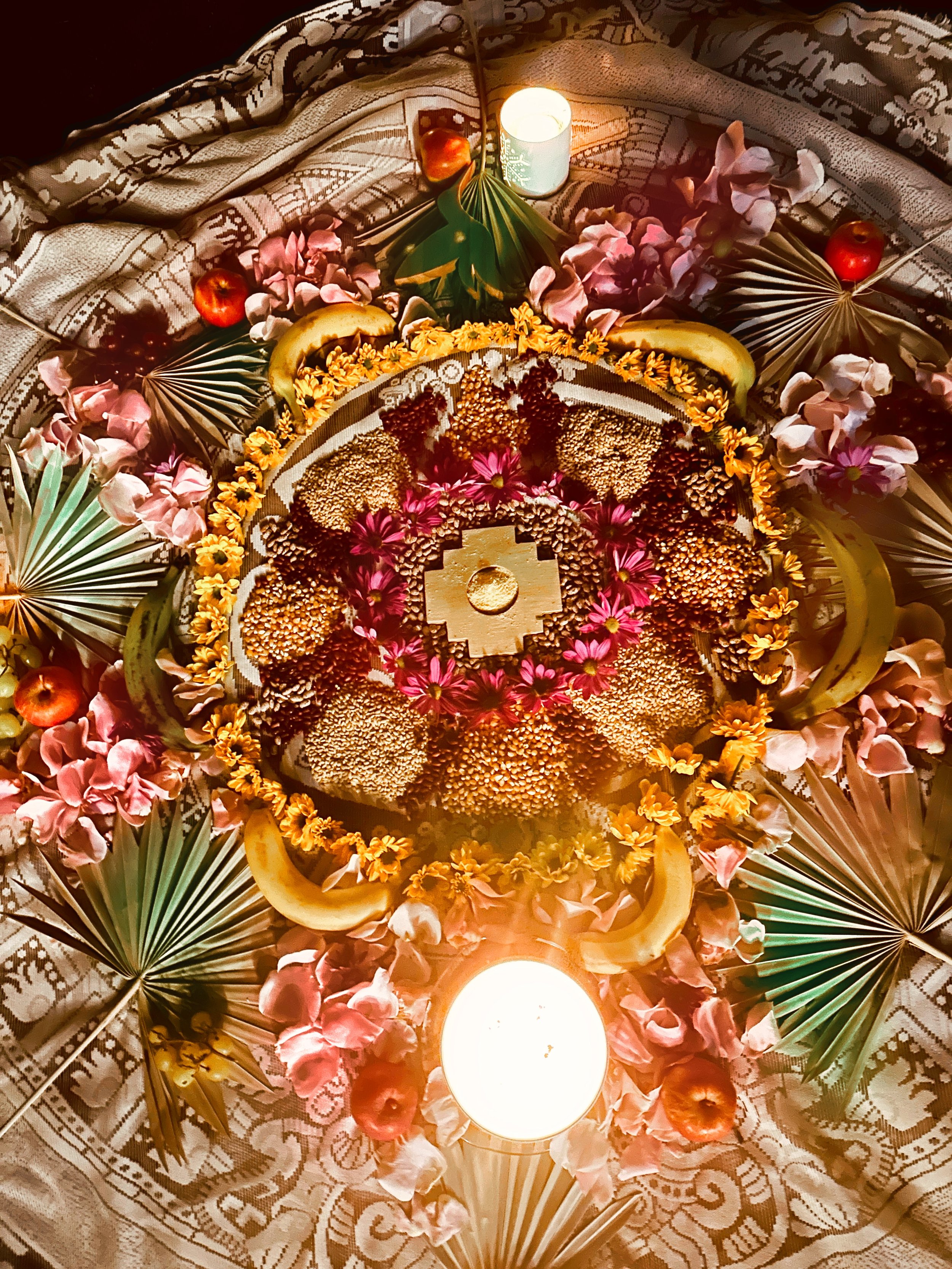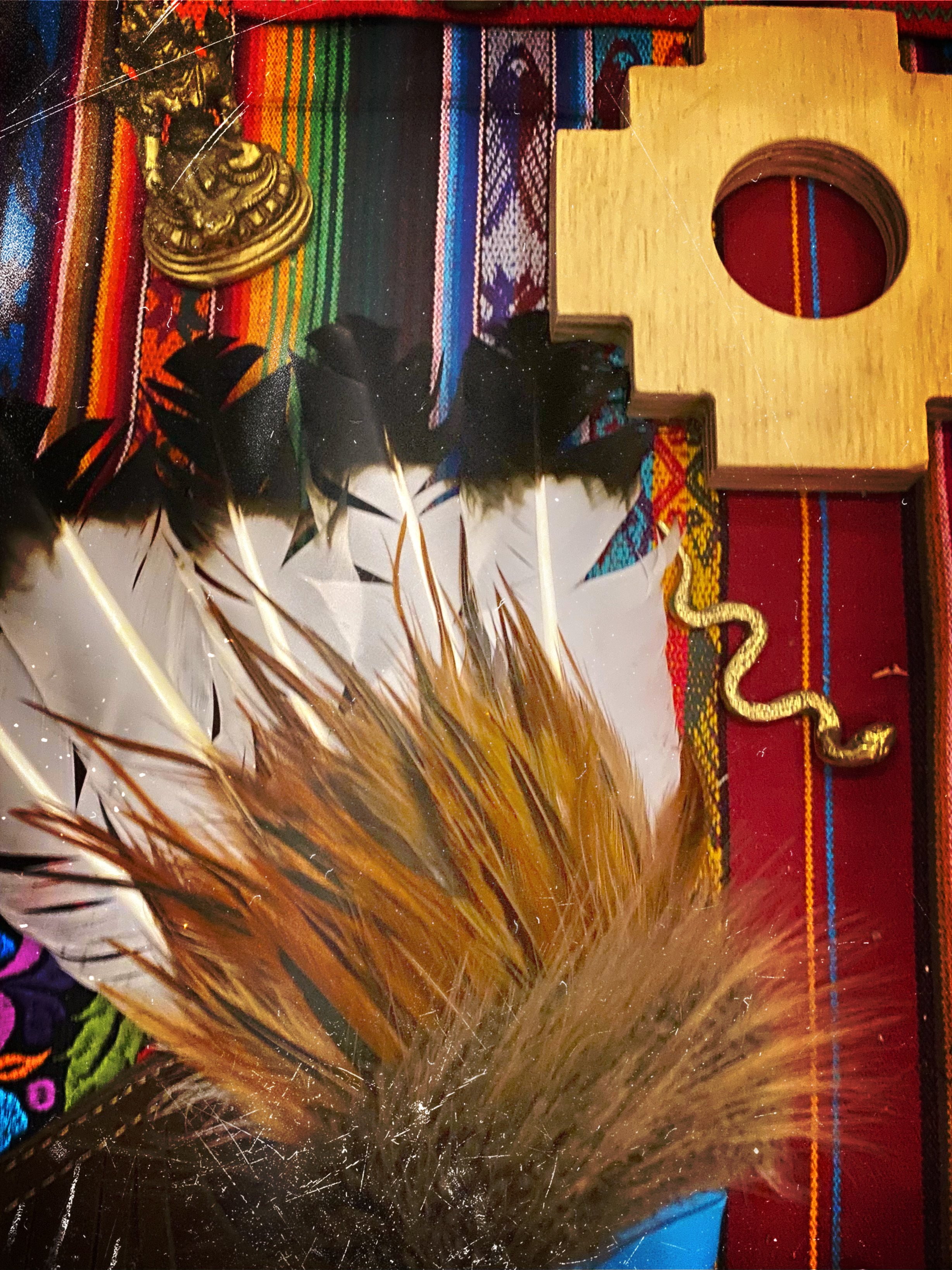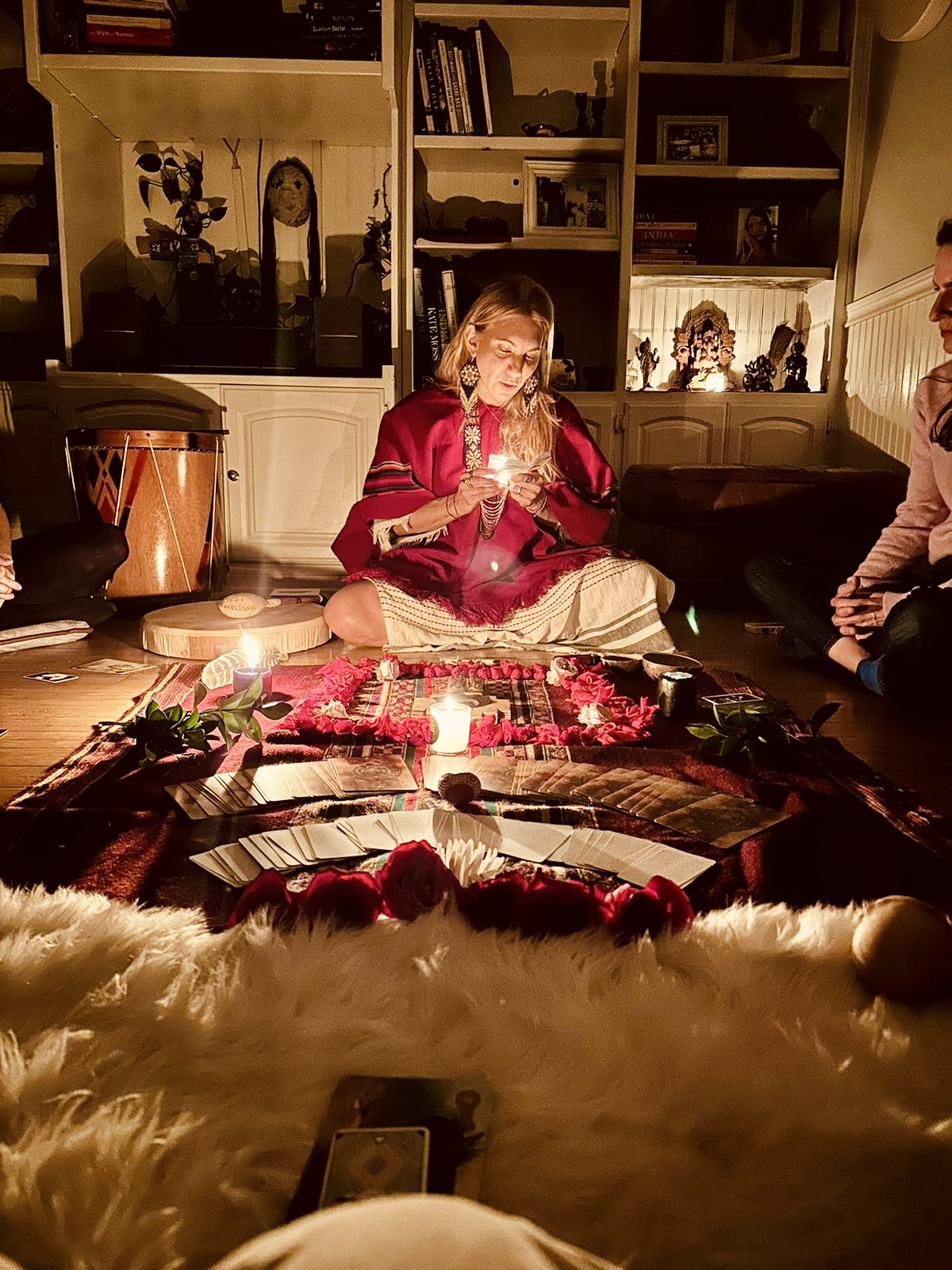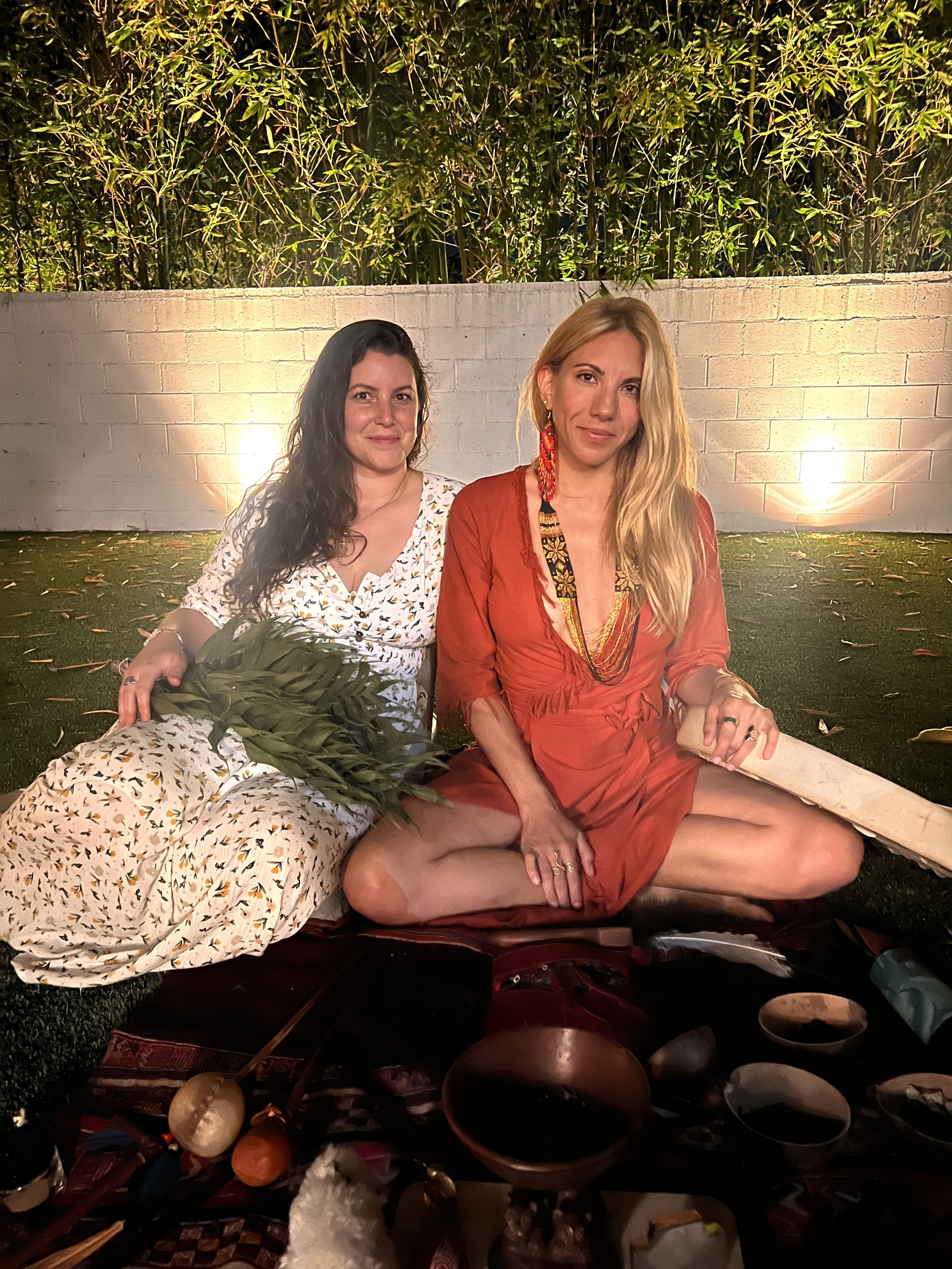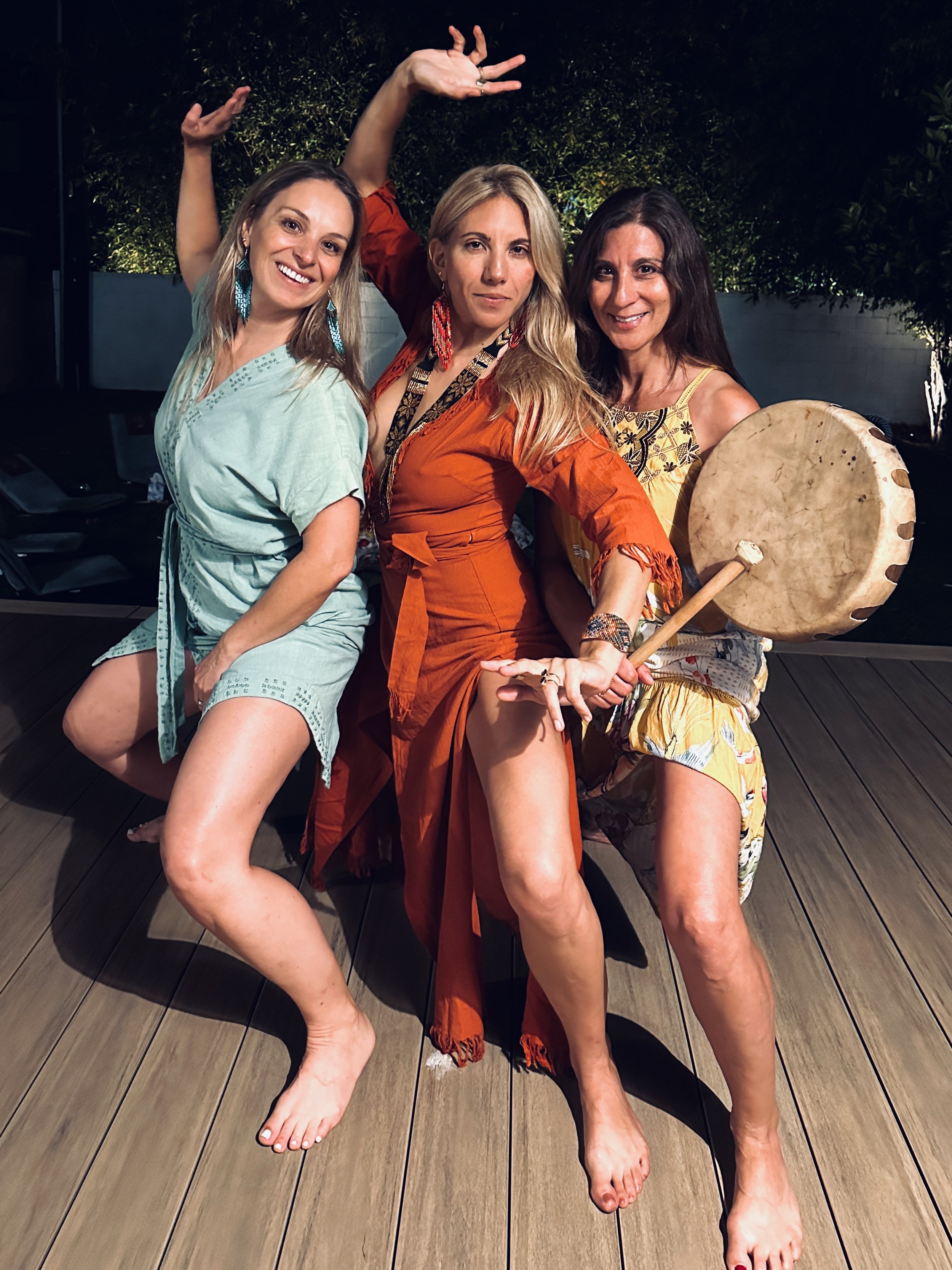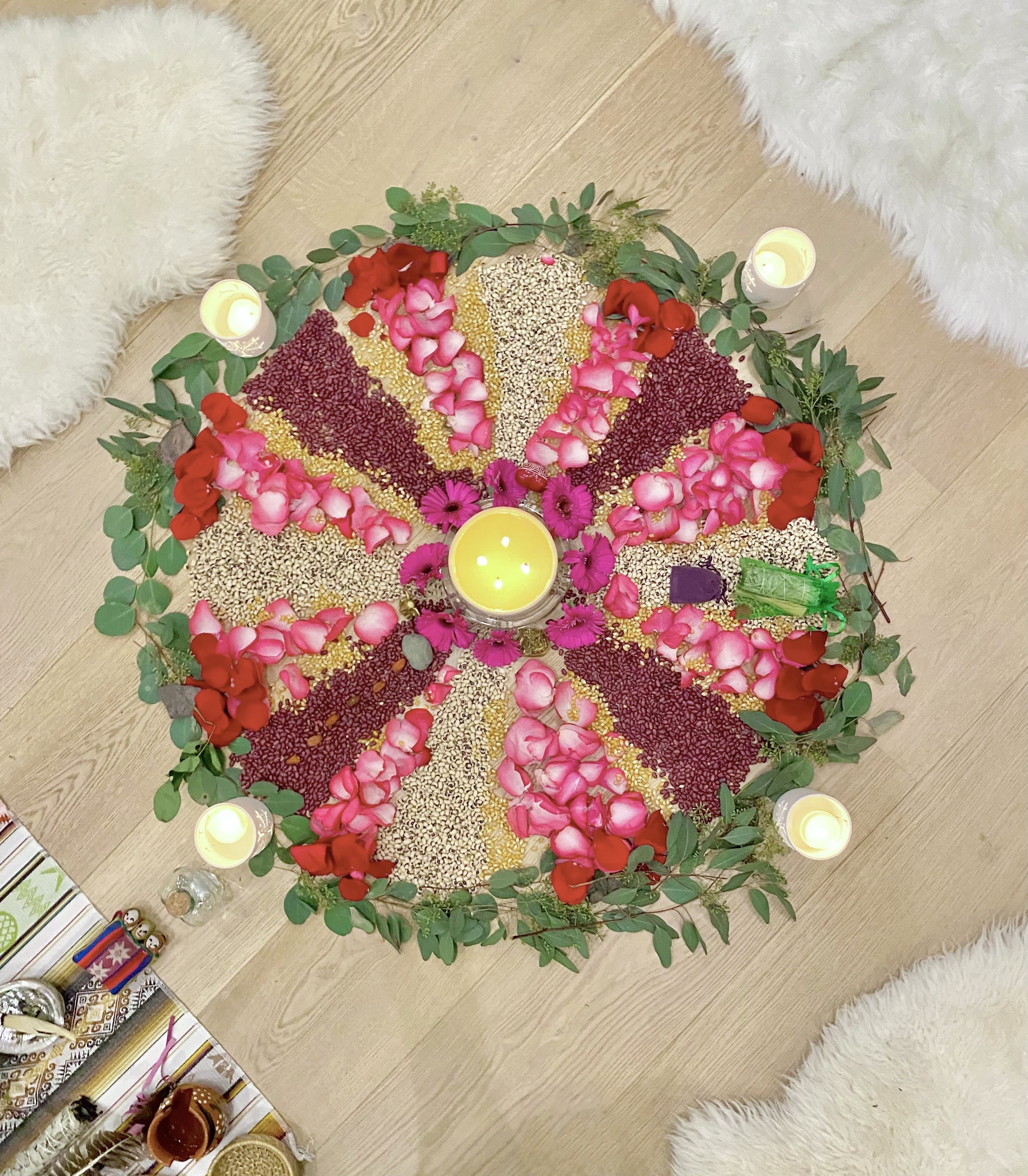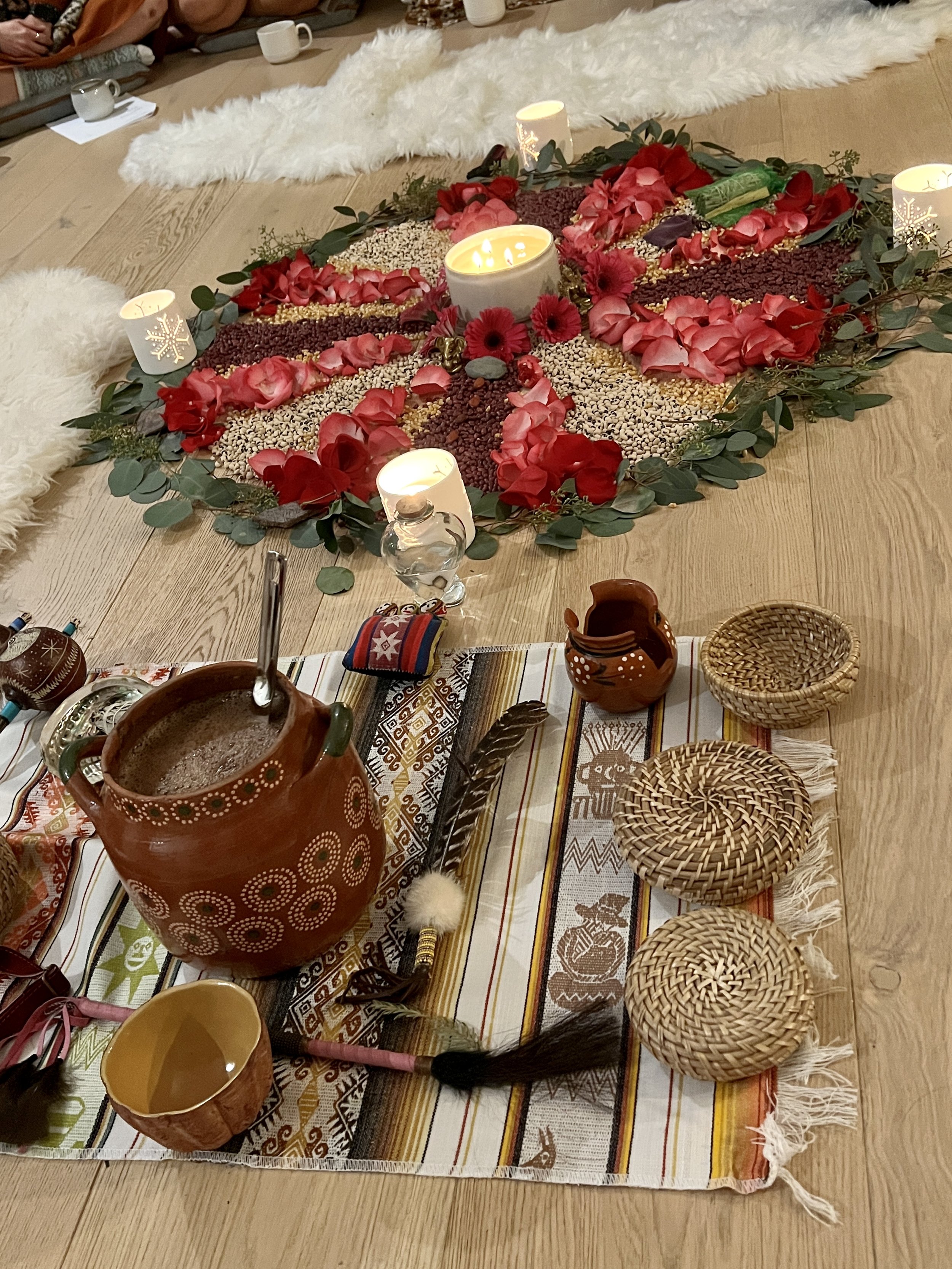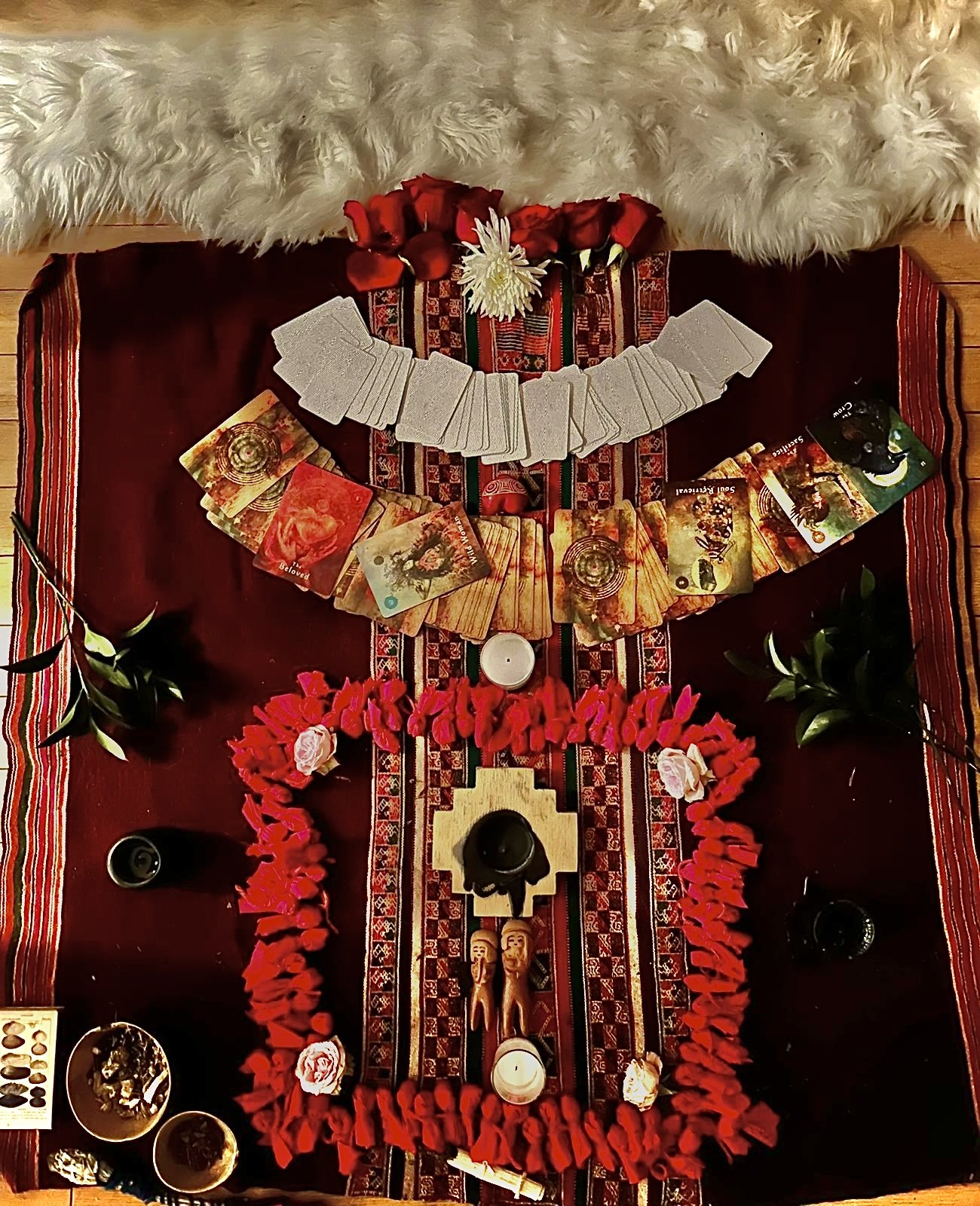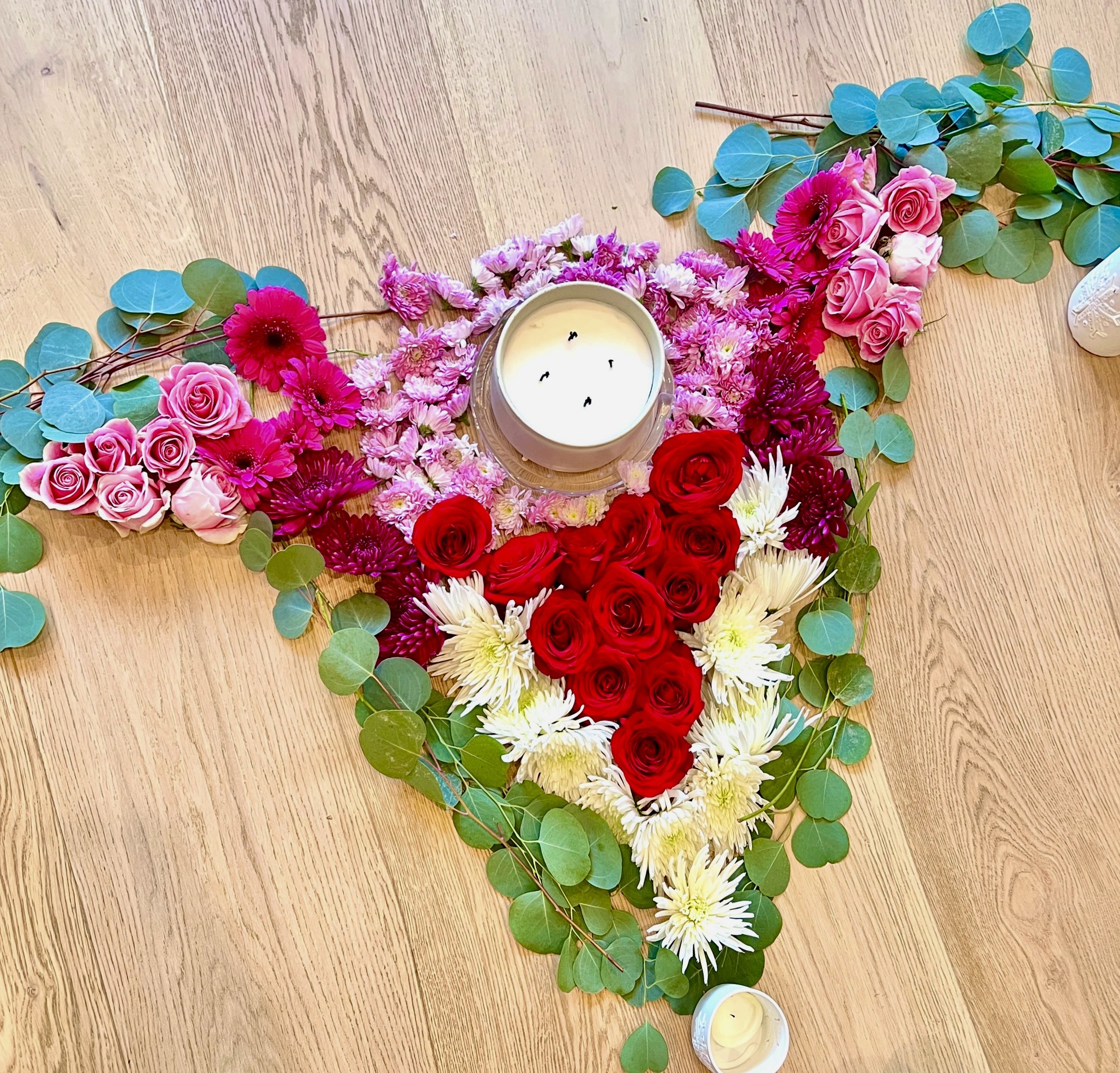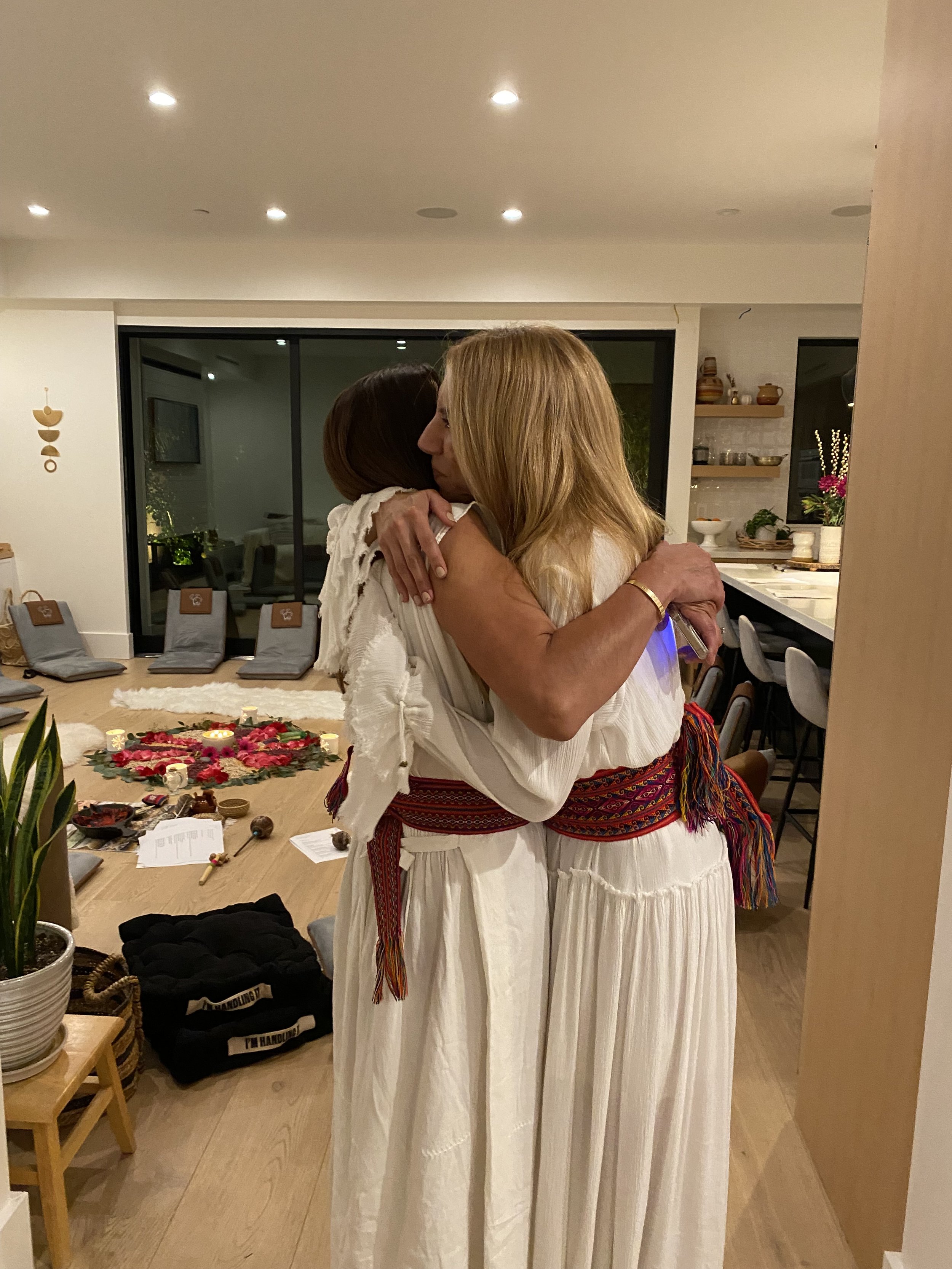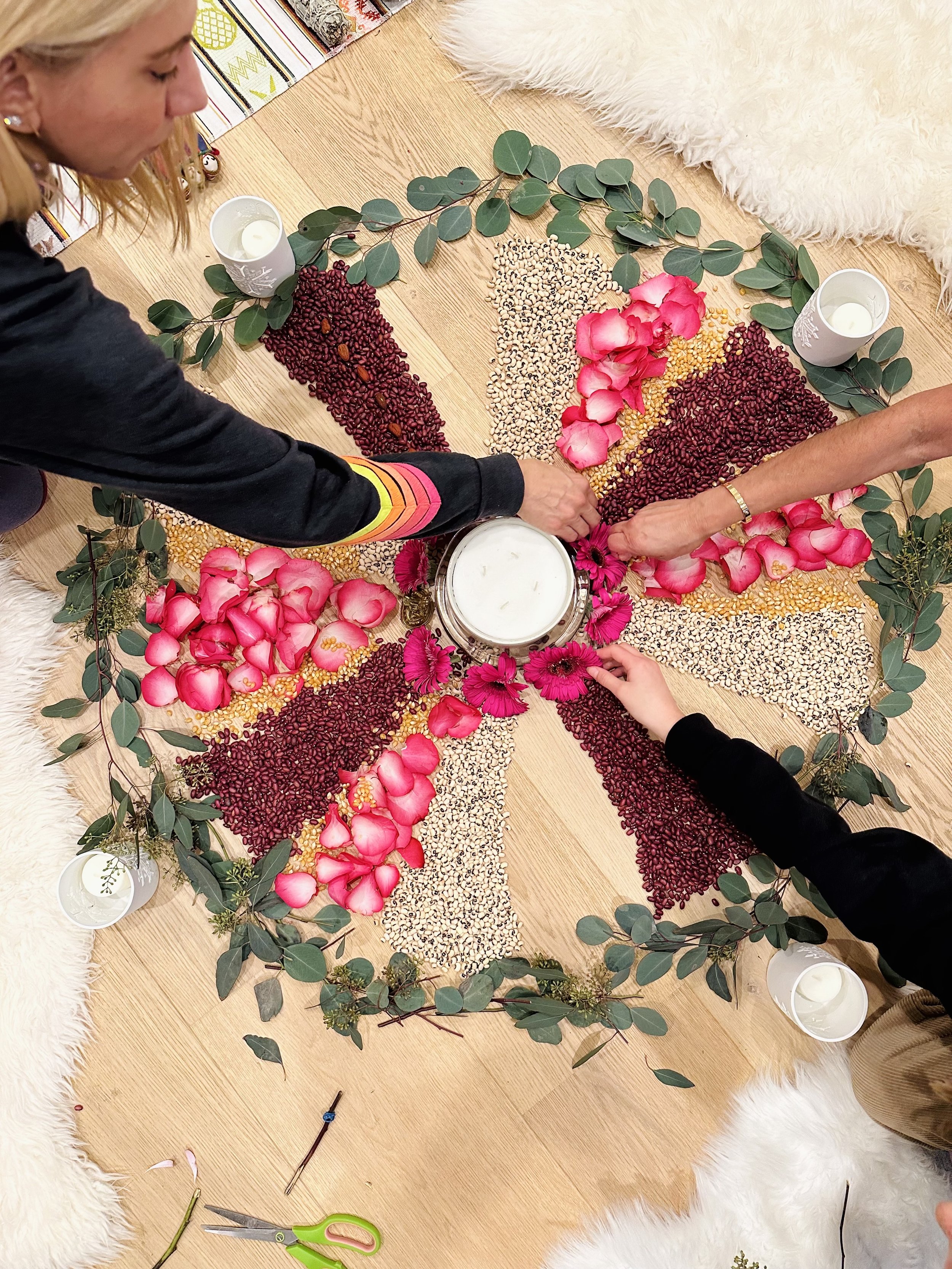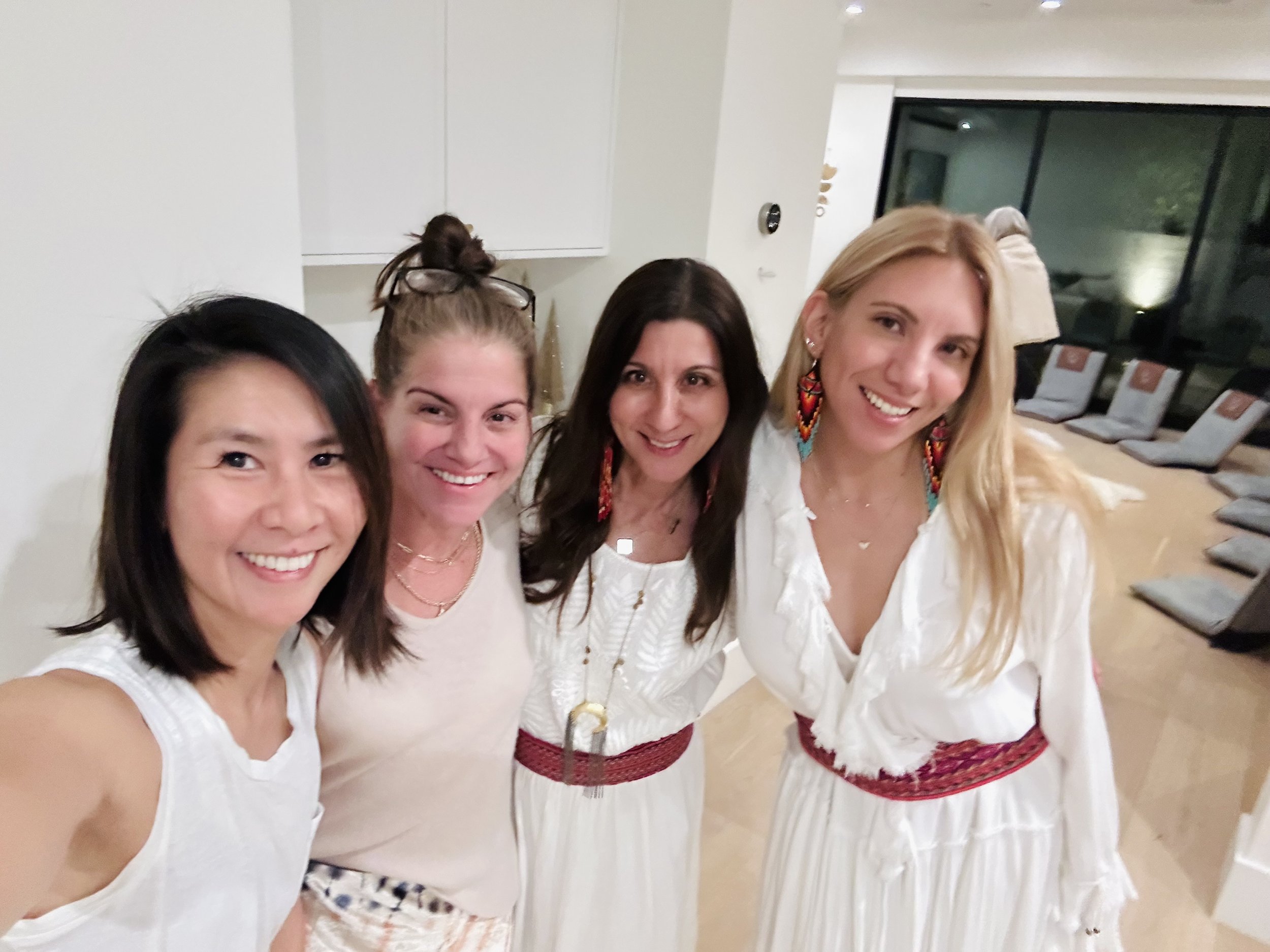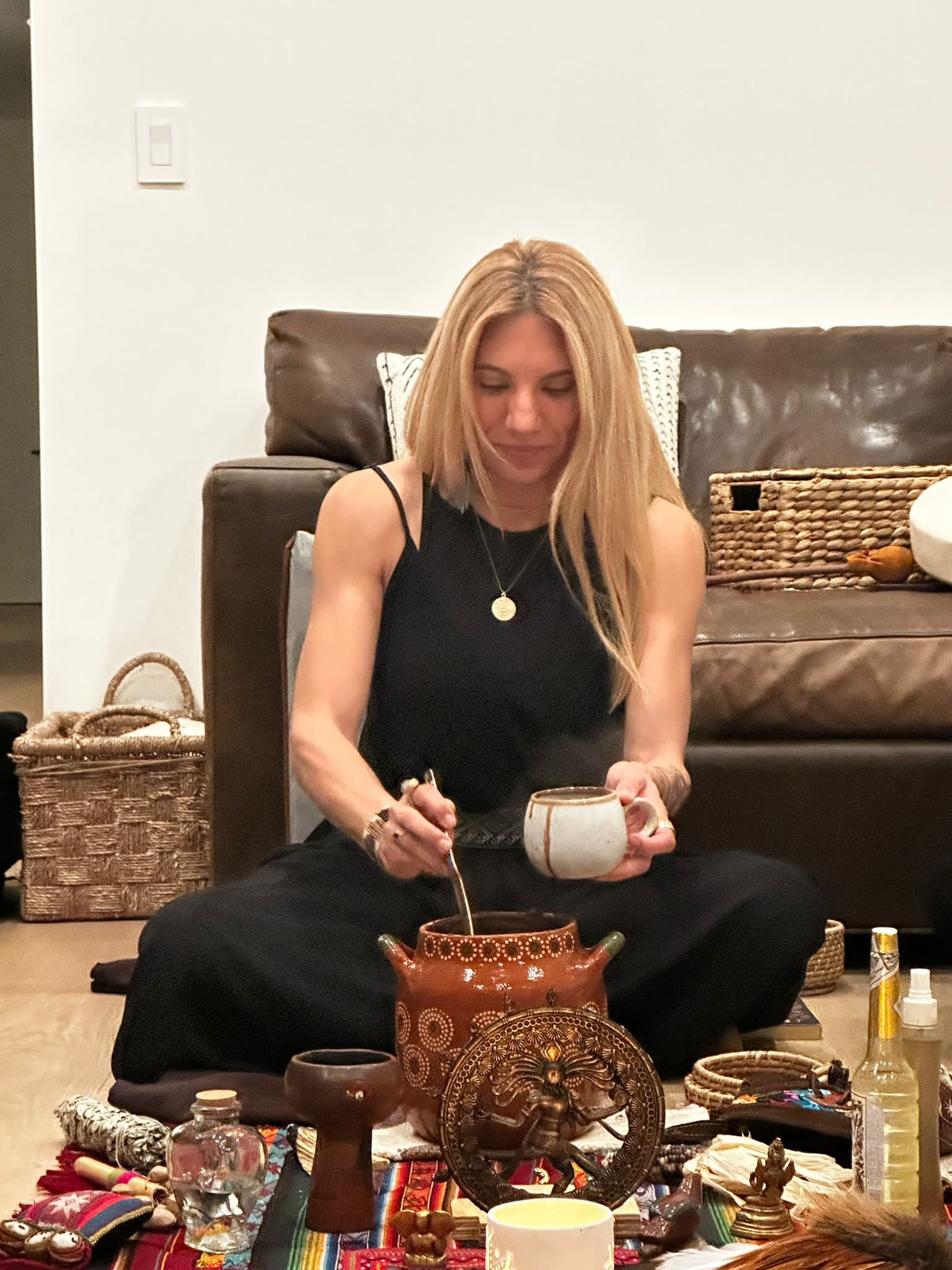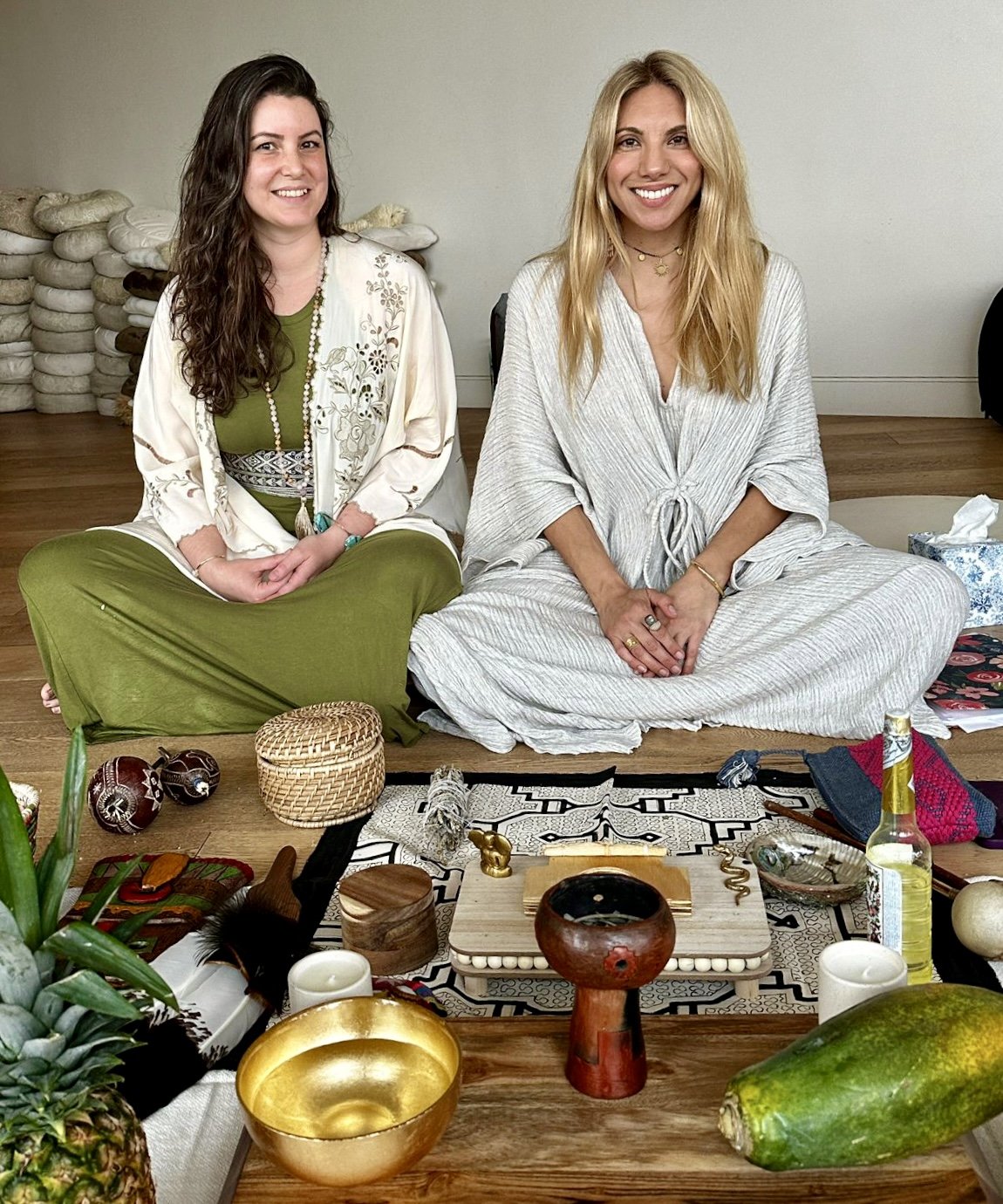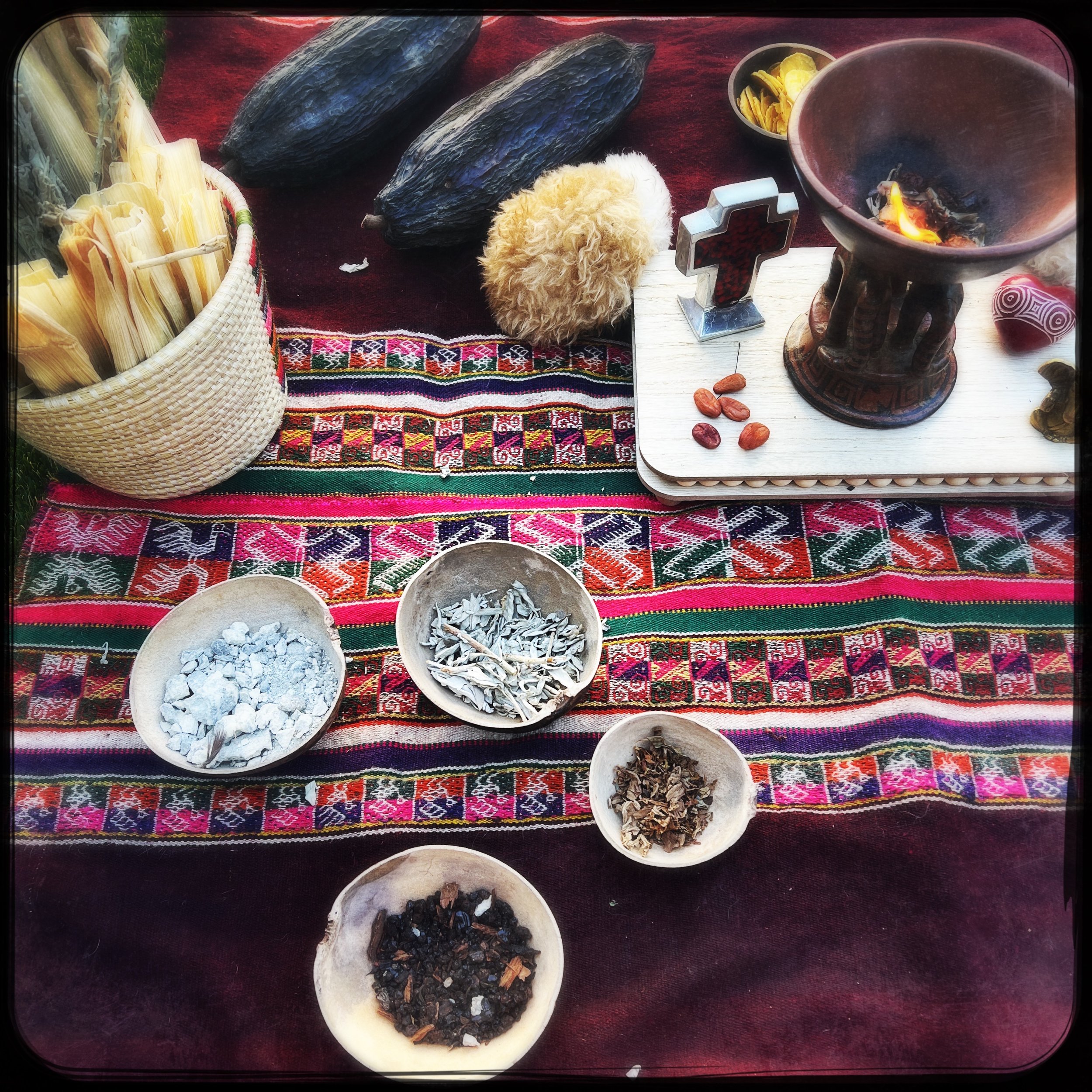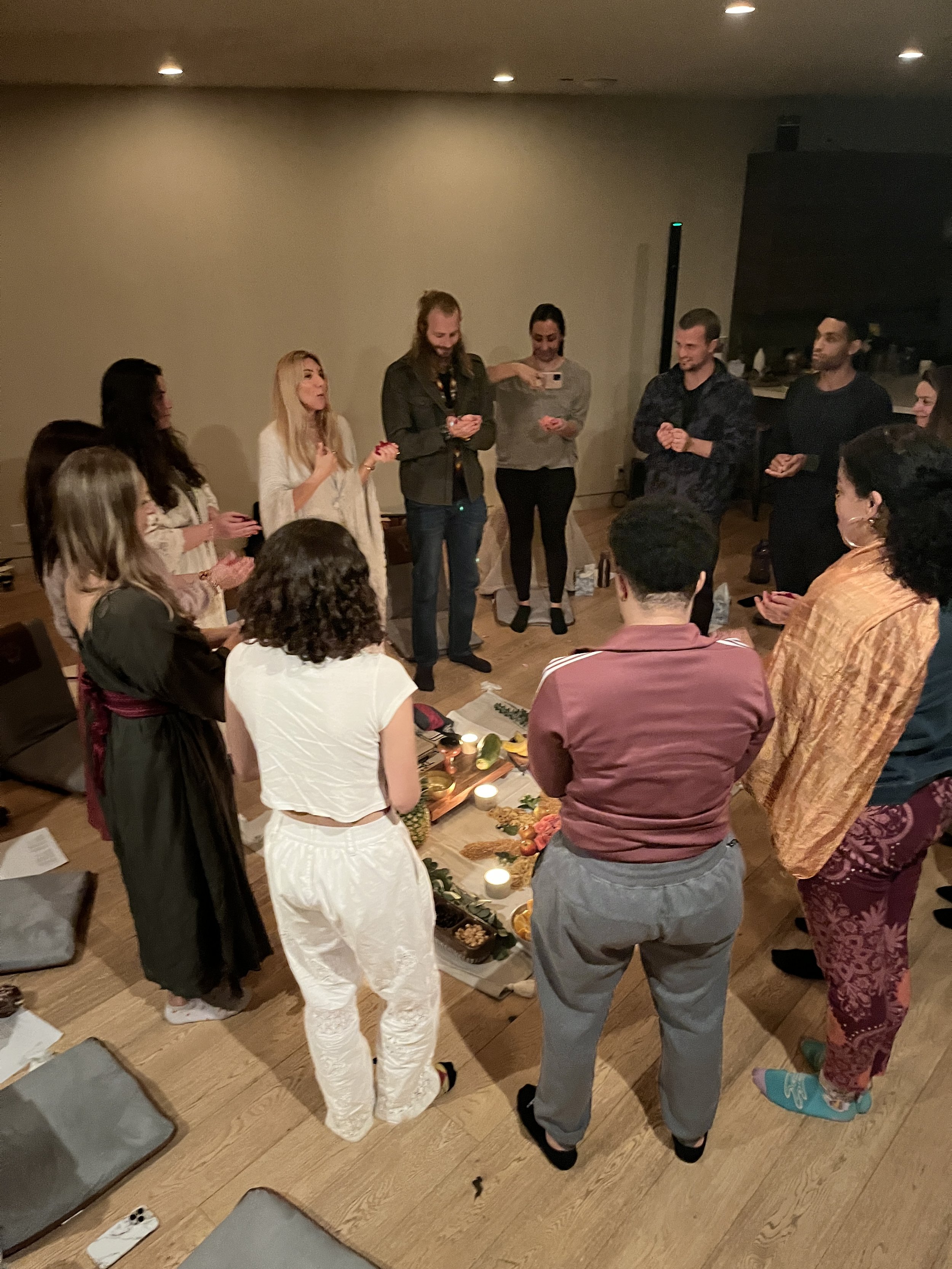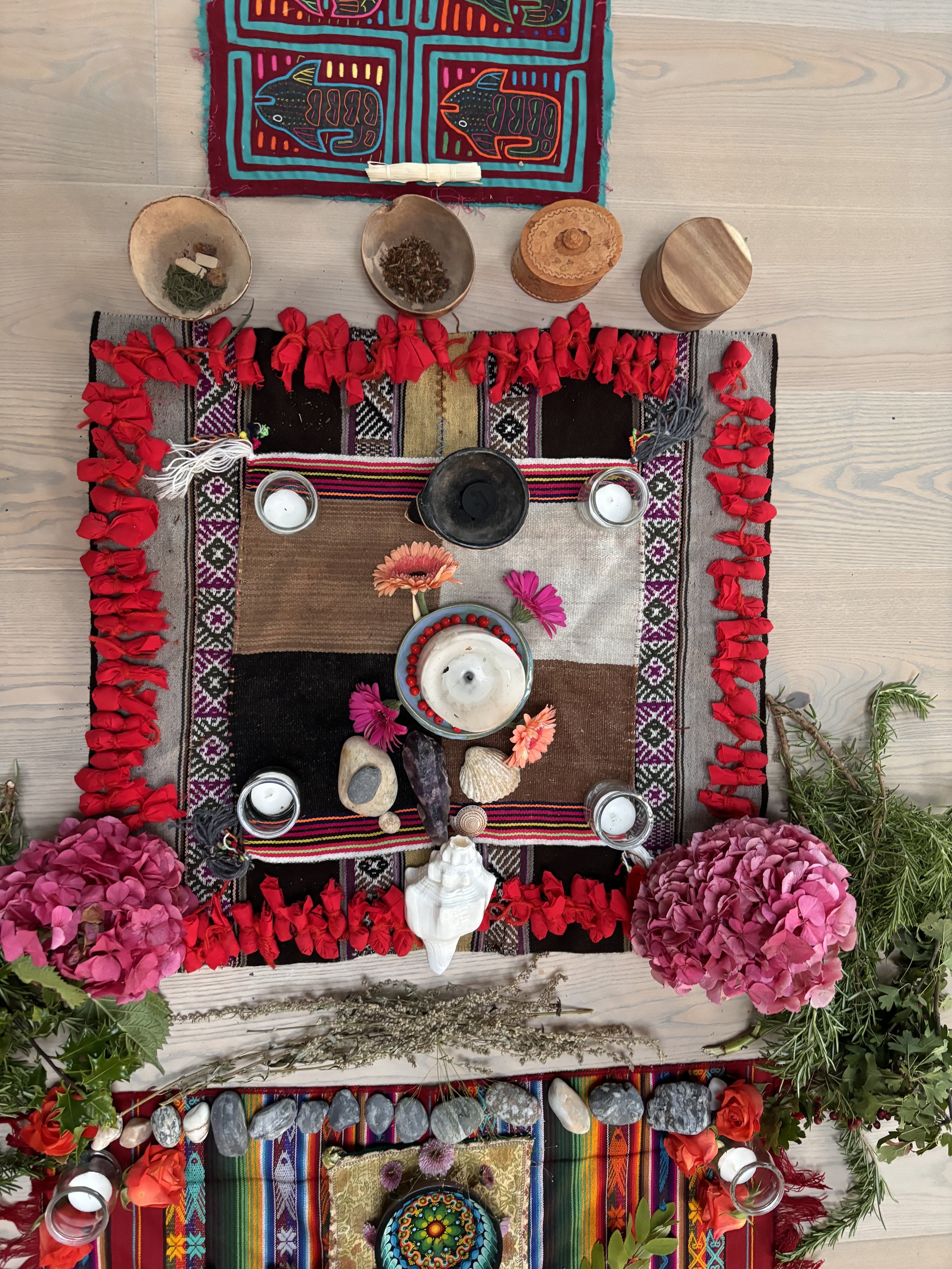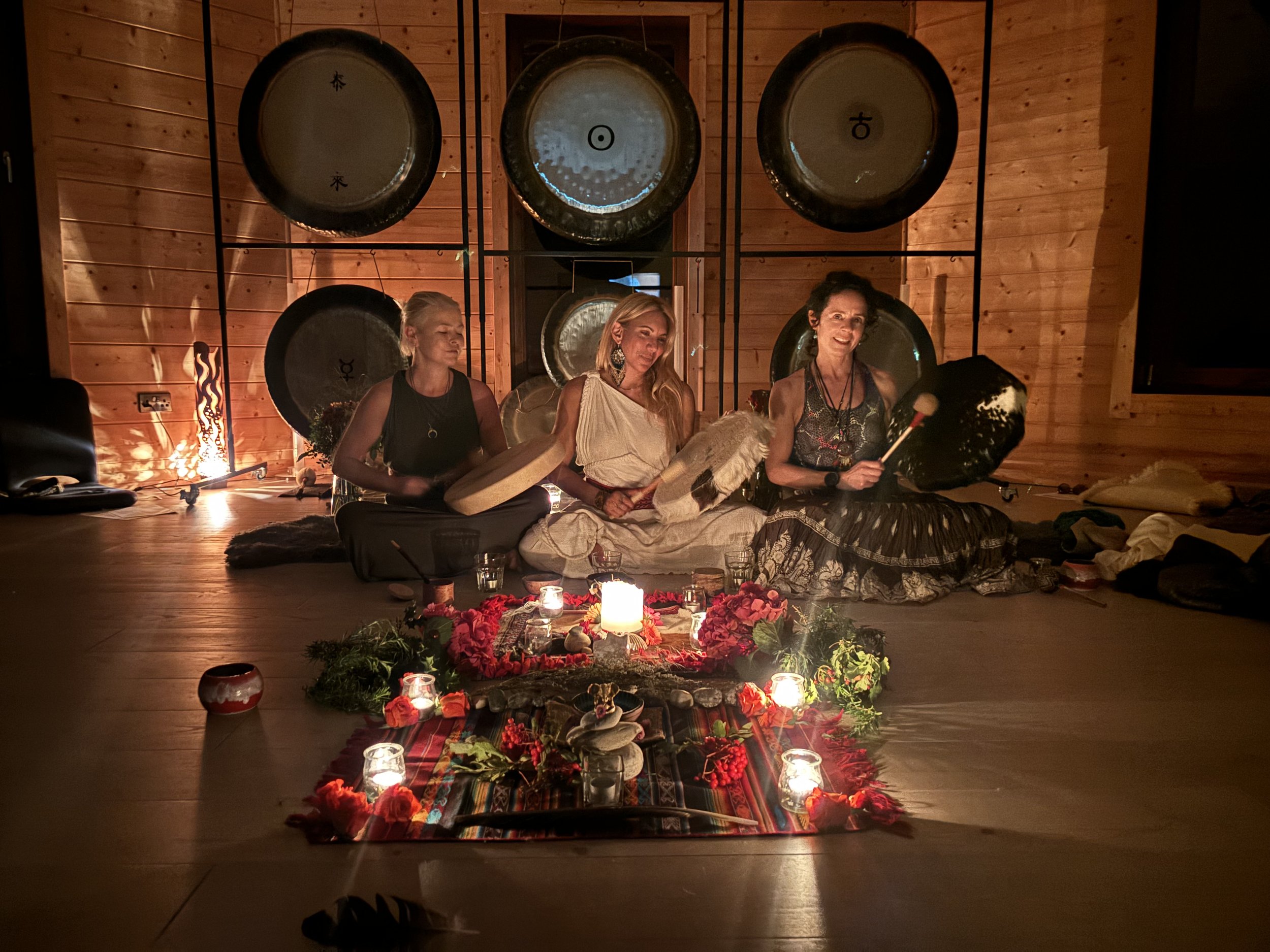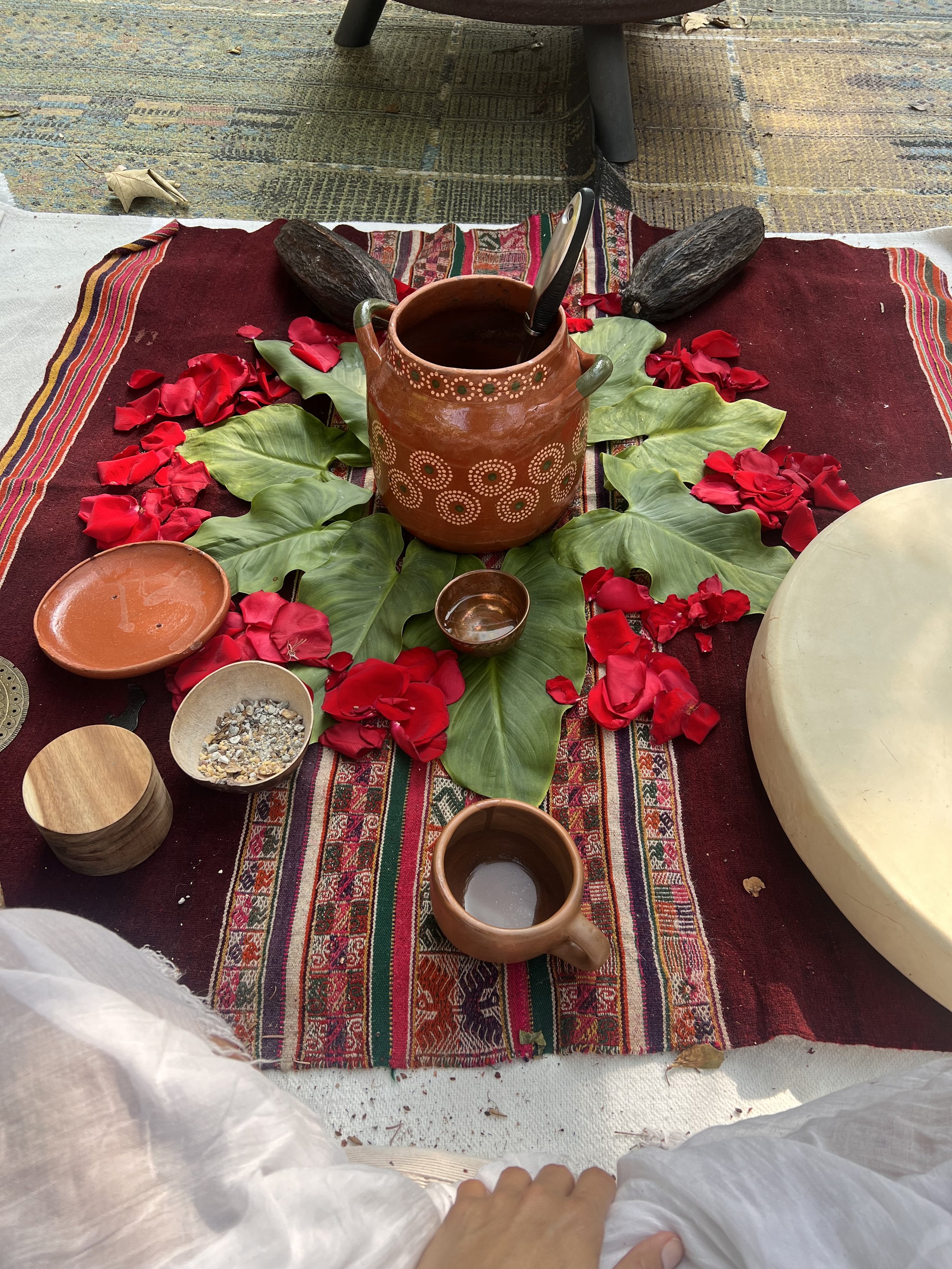Beloved family,
As we approach the sacred time of Día de los Muertos, we are invited to step into the unseen realms and reconnect with those who have walked before us, those whose bodies have returned to the earth but whose spirits still dance in the winds and beat in our hearts. Our ancestors are not gone—they are woven into every breath we take, every step we make, and every seed we plant.
As a daughter of the Andes, connected to the deep-rooted traditions of my Ecuadorian lineage, I want invite you to join me in and my dear friends in a Cacao Ceremony and Circle of Medicine Songs.
Together, we will honor our beloved dead, those whose imprints remain alive in our bodies, our memories, and our lands. This is a time to remember that we are part of an intricate web of relations, bound not only by the living but by the unseen threads of our ancestors' wisdom and love.
We will gather to create a sacred altar in their honor, placing offerings of flowers, candles, and sacred items. Through the heart-opening medicine of cacao, we will sit in circle, share stories, and chant medicine songs that will rise like smoke to the heavens, bridging worlds as we call upon their blessings and guidance.
In the warmth of community, we remember our interconnectedness with all beings—past, present, and future. Let us sit together, sip the sacred cacao, and let the songs of healing flow through us, awakening the remembrance that we are never alone.
What to Bring: Small items for the altar (photos, flowers, symbols of your ancestors), a blanket for comfort, and your open heart.
Come, beloveds, let us remember together.
With love and reverence,
Adela
Animist, Ritualist,
In devotion to the Ancestors and to Life
DIA DE LOS MUERTOS CACAO CEREMONY AND CIRCLE OF SACRED SONGS
Date: Saturday, November 2nd
Time: 7:00pm- 9:00pm
Place: At the Rooftop of Thrive Health and Wellness Collective.
2905 & 2907 STANFORD AVE. MARINA DEL REY, CA 90292
Reciprocity: $45
LIMITED SPACES AVAILABLE
reserve your space here
THE RITUAL IS SUPPORTED BY MY DEAR FRIENDS:
Mama Cacao - Diosa del amor abres el corazón.
As an Ecuadorian I feel great joy and responsibility for the opportunity to revitalize and honor the language of our traditional ways in which Mama Cacao has been in right relationship with my people. My offering combines the Andean cosmovision adapted to certain aspects of the lineage of the Mezoamerica people to create a container of tender vulnerability and power honoring the ancestors, the mystery, and all our relations.
EXPLORE PREVIOUS cacao CEREMONY gatherings:
CELEBRATING THE GIFTS DE LA PACHA MAMA
OUR CACAO
Arriba Nacional is one of the most beloved types of Cacao, favored by chocolate makers and Cacao enthusiasts alike. It is endemic to Ecuador and a source of pride for Ecuadorian farmers.
The cacao we work with is sourced by adela directly from ecuadorian farmers.
“Cacao de arriba," which translates to "from up the river" is what's known as a criollo strain. Criollo Cacao (criollo translates to "native" in Spanish, and IT is often used in relation to native strains of Cacao) is praised as the most flavorful cacao in the world; some say it's the healthiest as well.
THE TRUE HISTORY OF THIS SACRED SEED
Recent findings from a study of the Cacao genome show that this sacred plant spirit and medicine was first domesticated in the Amazonian basin, modern-day Ecuador. The findings conclude that Cacao was actually traded north through the Pacific routes to modern-day Guatemala, Belize and Mexico from the Amazon, and not the other way around, as has been commonly held for most of post-colonizers history. Arriba Nacional is believed to be one of the aboriginal strains and one of the first to be domesticated.
The first evidence of cacao use dates from approximately 5,300 years ago by the Mayo-Chinchipe civilization in Ecuador. Traces of theobromine (a chemical compound in cacao) have been found in their pottery, suggesting cacao was first used in a drink. This is a relatively recent discovery – up until 2018 it was believed that the earliest cacao use was about 4000 years ago by the pre-Olmec peoples of what is now Mexico.
It makes sense that a civilization in South America was the first to use cacao since cacao originated in the Amazon basin. The reason this is known is because the upper Amazon basis contains the greatest diversity of cacao genetics. There’s speculation that as the various cacao genomes traveled along the Amazon they developed into the distinct genetic varieties we find today. And this genetic diversity is one of the reasons cacao beans have such wildly different flavors. So, we have the Amazon to thank for much of the flavor diversity of our single origin cacao.




